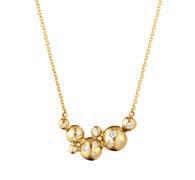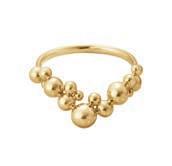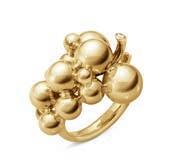


© 2020 Marriott International, Inc. All Rights Reserved. All names, marks and logos are the trademarks of Marriott International, Inc., or its affiliates.





© 2020 Marriott International, Inc. All Rights Reserved. All names, marks and logos are the trademarks of Marriott International, Inc., or its affiliates.

Visit the landmark Hotel Grande Bretagne and receive the unique chance of a lifetime experience through a collection of utmost accommodation services and indulging moments. The mythical views and the history of Europe’s oldest capital, Athens, promise to compose an unsurpassed cultural journey through its indigenous sights and unique flavors. EXPLORE THE DESTINATION AT GRANDEBRETAGNE.GR

IN THE EARLY ’90 s , when the well-known photographer Martin Parr was visiting some of Europe's most popular at tractions for his Small World project, the word “overtour ism” was still unknown in Greece. In fact, the year 1991, when he visited the Acropolis on his mission to “explore the difference between the realism and mythology of a ‘tourist honey pot,’” was one of the worst for tourism to Athens, for reasons we won't explore here.
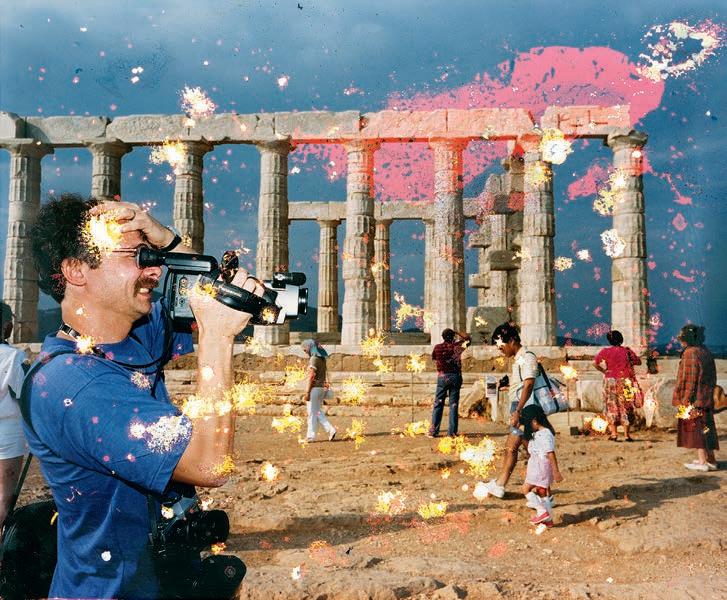
In the end, when the book “Small World,” described as “a biting and hilarious satire in which Martin Parr observes global tourism and the tourist's search for authentic cultures that are themselves destroyed in that search,” was published in 1995, the photos he took on the Acropolis were not in cluded. Most of them had, in fact, been damaged by a leak in Parr's office; the disappointed photographer dropped the whole lot in a box and forgot about them for years.
As time went by, Athens experienced a world of changes. It acquired a new state-of-the-art airport, a subway network, a set of tram lines, and ring roads designed to help alleviate its traffic problems. In 2004, it hosted the highly successful Olympic Games (and paid for them dearly); a few years lat er, it experienced the trauma of the economic crisis. Coming
out of that, it was hit, as indeed the whole world was, by the pandemic. Throughout all this, the city had bright moments of optimism furnished by the completion of significant proj ects – the Stavros Niarchos Foundation Cultural Center; the EMST, Athens' new contemporary art museum; the fully renovated National Gallery – and others that were finally given the green light, such as the redevelopment of the old Hellinikon Airport, an urban renewal initiative on a grand scale. Record tourism numbers were reached in 2019, and 2022 nearly equalled those high levels.
Meanwhile, back in the United Kingdom, Martin Parr came across those Acropolis photos years after he'd put them to the side. The water damage they had suffered revealed new colors and shapes, transforming them into something more complex than representations of other objects. Intrigued by what they'd become for him, he decided to publish them in a volume titled “Acropolis Now.”
Today, the city of Athens faces new challenges: gentri fication, the predominance of tourist-related activity at the expense of other undertakings, and the exodus of permanent residents from the center as the short-term rental model comes to dominate the real estate market. These are all stains on the happy image of an all-year destination, one certain to attract the new type of traveler who combines work with leisure. In his own way, Martin Parr took a position in the debate around tourism that's developing in this city. And that's why one of his photos was chosen to accompany this text.•



10
What to do and where to go indoors and outside over the mild winter days in Athens.
30

Creative Athenians share tips on their favorite city experiences.
36
The ancient streets below the Acropolis Museum.
42
Tourists welcome, residents needed: the dangers of overtourism and gentrification in downtown Athens.
What life is like for the young international creatives who have found a new home in the Greek capital.
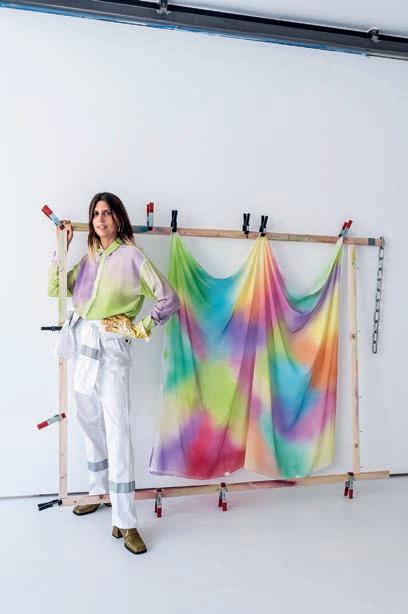
68
Athens’ major museums will feed your soul, and the neighborhoods around them will quench your thirst, quell your hunger and satisfy your shopping needs.
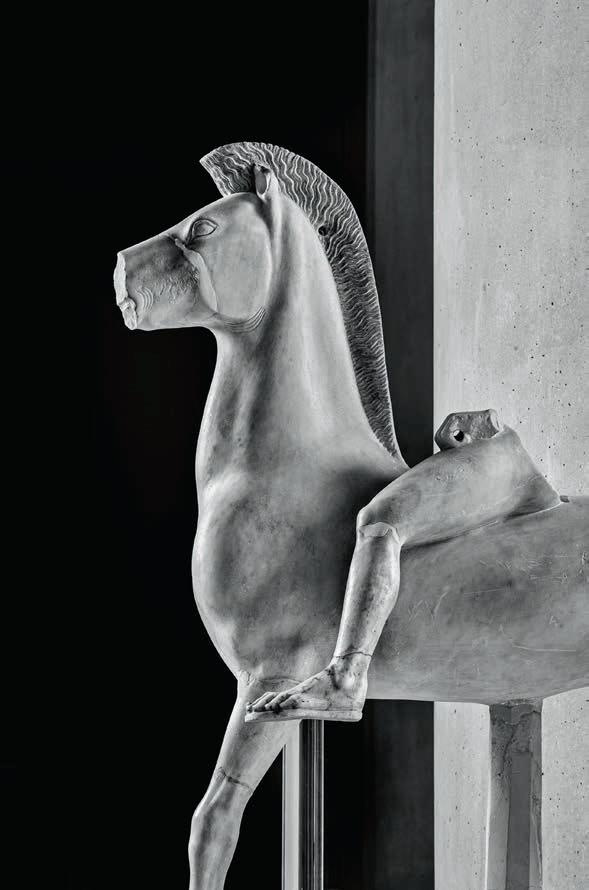
94 | CHILDREN-FRIENDLY
Tailored programs and tours at the city’s museums take the younger members of the family on a journey of experiential learning through play.
100
Four influential Athenians take us on a tour of their neighborhoods.

Why their return is a democratic imperative: in conversation with Christiane Tytgat & Paul Cartledge.
122
Tracing the ancient philosophers’ favorite haunts in and around the Athenian Agora.
A renowned Greek writer connects the past with the present as he visits five eateries that have their own story to tell.

EXPLORER SINGLE
MEMBER SA Mass Media
Ethnarchou Makariou & 2 Falireos, Athens, 18547, Greece
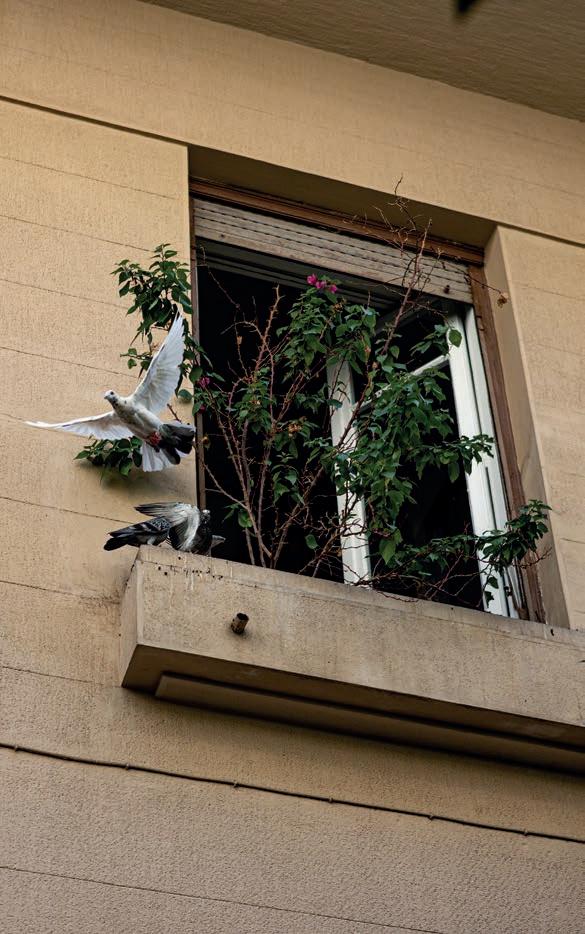
Tel. (+30) 210.480.8000 Fax (+30) 210.480.8202
EXECUTIVE EDITOR
Alexis Papahelas
EDITOR-IN-CHIEF
Giorgos Tsiros tsiros@kathimerini.gr
DEPUTY EDITOR
Nena Dimitriou nenadim@kathimerini.gr
ADVERTISING MANAGER
Kelly Lorentzou klorentzou@kathimerini.gr
COMMERCIAL INQUIRIES
Tel. (+30) 210.480.8227 Fax (+30) 210.480.8228 E-mails: sales@greece-is.com emporiko@kathimerini.gr
PUBLIC RELATIONS welcome@greece-is.com

GREECE IS - ATHENS is a biannual publication, distributed free of charge. It is illegal to reproduce any part of this publication without the written permission of the publisher.
ON THE COVER Collage by Dimitris Tsoumplekas


 © MOHAMMED KAZEM
Scan here for the "Seeing the Invisible" app.
© MOHAMMED KAZEM
Scan here for the "Seeing the Invisible" app.
“THE PARK REMAINS in my memory like no other park I have known,” wrote American writer Henry Miller, remembering his visit to the National Gardens in Athens. This verdant oasis was the most significant project undertaken by Queen Amalia, the wife of King Otto, during her stay in Greece (1837 - 1862). Dating from 1839, the gardens are located a stone’s throw from the Hellenic Parliament, stretching over an expanse of 285,000 square meters, and featuring 7000 trees, 40,000 bushes, and many more plants. Most are not indigenous, as Amalia envisioned it as an “exotic” space. At present, your visit can be made even more interesting if you download a free app that will enable you to uncover contemporary digital artworks nestled behind oleanders or rising up in front of the Canary palm trees. The exhibition “Seeing the Invisible” includes 14 digital installations that focus on the relationship between man and the environment, with works by artists such as Αi Weiwei, El Anatsui, Siaglit Landau, Ori Gersht, and Isaac Julien. The artworks, created using augmented reality, are being presented in ten botanical gardens worldwide, from Australia and Singapore to North America, Canada, and North Africa. The app will show you where the images can be found; you scan them as you approach and the artwork appears before your eyes.
xenia georgiadou
→ Until 30/09/2023, National Gardens, Vasilissis Amalias, closes every day at 7:30pm, seeingtheinvisible.art

the

THE TIMES NEWSPAPER HAS NAMED HIM a “masterful theatrical magician and imagist,” the Guardian “a master of contradictions,” and the Financial Times “an artist who paints with bodies.” With every work, the noted choreographer-director and visual artist Dimitris Papaioannou creates images of astonishing power and beauty, the product, in part, of an exceptional education; he studied with the great artist of Greek modernism, Yannis Tsarouhis before enrolling at the Athens School of Fine Arts. Papaioannou views the scene as a canvas, which is why everything - set, lighting, dancers and music - functions as an equally important part of an artistic composition. His new performance, “INK,” was born during the pandemic. On stage, he is joined by the dancer Suka Horn. They engage in a choreographed duel and, through the opposition of their bodies, contend with the complexity of human desire. The first version of INK was presented in 2020 at the Torino Danza Festival and the Reggio Emilia Aperto Festival; its international tour is being launched from Athens. xenia georgiadou → 12-27/01/2023, Athens Concert Hall, Vasilissis Sofias & Kokkali, megaron.gr


 © DIMITRIS VLAIKOS, PERIKLES MERAKOS
© DIMITRIS VLAIKOS, PERIKLES MERAKOS

FOR DECADES, there were a number of flower shops along the street outside Parliament. These shops, which supplied many of the wreaths placed on the Tomb of the Unknown Soldier in adjacent Syntagma Square, quickly won the hearts of Athenians and became landmarks in their own right, until the economic crisis led to the closures of most of them. Recently, however, Athens has welcomed a new series of shops in that same space, now completely refurbished, including a florist’s, a charitable organization, and a store selling museum-quality reproductions of important archaeological objects, including copies of the 4th-century BC heads of Nike and Hygeia, unearthed at Epidaurus, and of a miniature horse with wheels, a toy dating to 900 BC discovered at Kerameikos. Drop by and check out the entire collection of wonderful souvenirs, items from the distant past that have fascinating stories of their own to tell.


nena dimitriou
→ Open daily 10:00-18:00




THE NATIONAL GALLERYAlexandros Soutsos Museum reopened in May 2021 after a decade of major reconstruction that saw it double in size. When it first opened back in 1900, its permanent collection featured just 258 artworks, most of them by foreign artists, as Greek art collectors of the time invested money in names that appeared in major galleries around the world. In 1919, however, the National Gallery acquired “The Slope” by Konstantinos Parthenis, an artist considered radical by Greek art standards of the time.This marked a significant shift in focus for the museum, with more attention being given to contemporary Greek creations. Nevertheless, donations and acquisitions of international artworks never stopped, and today, the international collection of the National Gallery comprises 1250 artworks from western Europe that date from the 14th century to the present day. Featured artists include Van Dyck, Eugene Delacroix, Goya, Bonnard, Monet, Kandinsky, Braque, Picasso, Matisse, Miro, Picabia, Magritte and Fontana. A new wing dedicated to Western European paintings welcomed its first visitors only a few weeks ago. Standout works include “Holy Trinity” (c. 1384) by Marco Veneziano, the oldest artwork in the collection, the striking “Episode from the Greek War of Independence” (1856) by Eugene Delacroix, the “Windmill” (1905) by Mondrian and “Woman’s Head” by Picasso, which the artist donated to the Greek people in recognition of their brave resistance during the German Occupation. xenia georgiadou



PERISTYLION CAFÉ is a new venture located in the imposing entrance of the Athens Conservatoire, and a great reason to visit this educational institution, an Athenian equivalent of New York's Juilliard School. Thousands of Greek performers from the world of music, theater and dance have studied their craft here, in a building considered to be one of the best examples of Greek post-war modernism – even though it was only fully completed very recently. The official inauguration of all the Conservatoire's new spaces will take place before the end of the year. dimitris rigopoulos
→ Athens Conservatoire, 17-19 Rigillis and Vasileos Georgiou II.


GREEK SHIPPING TYCOON Basil Goulandris and his wife Elise bought their first painting, El Greco’s “Veil of Saint Veronica,” in 1956 and continued to build one of the most important private collections to be assembled in the course of the second half of the 20th century, with care, patience, and impeccable taste. Thirty years in the making, the purpose-built museum of The Collection of the Basil & Elise Goulandris Foundation they envisioned finally opened its doors in 2018, revealing to the art-loving public rare masterpieces by leading figures of 19th and 20th-century art, including Cézanne, Van Gogh, Gauguin, Braque, Picasso, Miro, Giacometti and Balthus. Its next temporary exhibition, “Νοuveau Realisme,” is dedicated to the short-lived yet hugely influential artistic movement founded in 1960 by the art critic Pierre Restany and the painter Yves Klein, advocating a return to “reality” outside the confinements of figurative art and in opposition to the lyricism of abstract painting. xenia georgiadou
→ From 11/01 to 09/04, Basil & Elise Goulandris Foundation, 13 Eratosthenous, open Mon, Wed, Thu, Sat 10.00-18.00, Fri 10.00-20.00, goulandris.gr

The male definite articles, “O”, that are repeatedly being used in our language, reflect the underrepresentation of women in positions of power.
At Piraeus Bank, we designed the program EQUALL and we commit that we will contribute to the creation of a society of equal people through our actions and initiatives:

• Women Entrepreneurship Support Program
• Reintegration of Women into the Labor Market
• Educational Programs to Raise the Awareness of the Younger Generation on Gender Stereotypes and Professions
PIRAEUS BANKATHENS IS A CITY WHERE digital hasn't killed off print, and where new bookstores are greeted with joy by residents and visitors alike. The smartly designed Kombrai (32 Didotou) opened in September of 2022 in the heart of Athens’ traditional publishing district in Exarchia, stocking a growing selection of Greek and English books. Order a coffee, pick-up a book and read or write for as long as you like in the comfy mezzanine workspace upstairs.
Hyper Hypo’s (10 Voreou) 2021 arrival in Monastiraki is one of a kind, stocking international art, design and fashion books, independent magazines and zines and serving a creative community not previously represented in Athens. You won’t find a more attractive or better-run bookstore anywhere else in the city center.
Founded by Greek-French Odile Bréhier and Greek Yiannis Skoufis 11 years ago, To Lexikopoleio (13 Stasinou) has become a much-loved local institution. Along with its wide inventory of books, comics and journals in English, French and Greek, the bookstore holds lectures and other cultural events. Ask in-store about the Vatrahonissi Project, inspired by the archaic name for the neighborhood, literally “Frog Island,” and masterminded by To Lexikopoleio to connect and support the area’s vibrant network of independent shops, businesses and artists. alex king



THE COZY GREEK-FRENCH bistro Bon Bon Fait Maison L’ Atelier is housed in a 19thcentury neoclassical residence once owned by the family of the Greek revolutionary hero Markos Botsaris. Chef Kriton Poulis, who spent 10 years as the right hand of famed French pâtissier Pierre Herme, has created an all-day menu with tasty options for breakfast and brunch (the egg dishes, tarts, and sandwiches are all excellent, as are the Breton crêpes with Cretan smoked pork, Greek yogurt and Naxos graviera cheese), as well as for lunch and dinner. Standout dishes include glazed parsnip served with watercress sauce and a crispy mollet egg. Desserts include a fraisier cake with olive oil, and a pistachio mille-feuille. The wine list features Greek and French selections and winebased cocktails. georgia papastamou → 8 Kalamiotou, Τel. (+30) 210.324.3053, open Mon-Sat 10:00-00:00, Sun 11:00-23:30
GREEKS AND ITALIANS have a lot in common, including a joie de vivre and a love for food, and these similarities inspired the owner of Il Capitano to open this osteria, which sits in the popular neighborhood of Koukaki near the Acropolis. The menu, which changes often, features specialties of the Veneto region and meze dishes associated with Greek panigiria (traditional festivals). Here, you can enjoy a tomato spread from Mykonos on toasted bread, some lemony lahanodolmades (cabbage rolls), bigoli pasta with onions and sage, and goat patoudo, a specialty from the island of Naxos with rice, liver, herbs and raisins. The drinks list is also a Greek-Italian affair, featuring tsipouro, ouzo, amaro, grappa, Franciacorta (Italian “champagne”), and wines from both countries. georgia papastamou → 107 Veikou, Tel. (+30) 210.924.5645




IF YOU LOVE GOOD BREAD and freshly baked delicacies, you're in luck – this is a perfect time to be in Athens. There are more and more new bakers in the city, and some long lines are forming outside their stores, drawn by the thick sourdough bread with a crispy crust and by the croissants, brioches and biscuits, too. It’s been three years since the bakery scene exploded here, with pioneers such as Kora andits addictive pain au chocolat and sandwiches in fluffy focaccia bread, orTromero Paidi ("enfant terrible"), with its incredible sourdough baguettes. These establishments demonstrated how excellent bread can be made using only water, flour, salt, heaps of patience and absolutely no additives or preservatives. Several other quality bakeries followed their example. Black Salami in Exarchia is known for its slow-fermented bread and its sandwiches. Newly opened Bread B.C. has introduced “4 ancient seeds,” a bread with four grains – buckwheat, flaxseed, wild barley and teff, as well as a Greek version of focaccia traditionally made in Lakonia called “propira.” georgia papastamou

→ Kora, 44 Anagnostopoulou
→ Tromero Paidi, 30 Papadiamantopoulou
→ Black Salami, 71 Zoodohou Pigis & Methonis
→ Bread B.C., 59 Aghias Paraskevis, Halandri


UNTIL THREE YEARS AGO , there were no taprooms in Athens. Now they're springing up like mushrooms in various neighborhoods. In these taprooms, owner-brewers introduce their patrons to the craft culture, serving fresh beer from Greek and foreign microbreweries and organizing food nights and beer-tasting events. Strange Brew Taproom & Bottleshop (86 Falirou) holds the title of the city’s first taproom. While it didn't open until in 2019, its owners were already brewers whose beers had caused a sensation in local shops. Their core beer is Jasmine IPA, and there's an Uncle Jam’s series as well. Slow Down (39 Kydantidon) opened recently in Petralona. It serves a beer of the same name, produced in a nanobrewery in Evdilos, Ikaria, using water from the island. Blame the Sun (60 Veikou) boasts lots of branded craft beers, including many new to the domestic scene, and great beer-based cocktails. Tap 27 (27 Eratosthenous), by Mustaki Nomad Brewing, is a tiny taproom that offers craft beers from Greek microbrewers as well as some rare ones, such as Omnipollo, from the international market that are worth trying. marina petridou




TEXT: VLASSIS KOSTOUROS

Owner & Director, Dio Horia Gallery @vranopoulaki @diohoria

1. I love the Museum of Cycladic Art (4 Neofytou Douka); its collection is the largest of its kind in the world and features objects from all phases of the Cycladic civilization, from figurines to vases, tools, weapons and pottery.
Photographer, Creative Director, Co-Creator @mona_athens @shila_athens @eftihia
1. The Odeon of Herodes Atticus (Dionysiou Areopagitou) is a must-see, even in winter when its glorious stage remains silent, as is the Temple of Poseidon on Cape Sounion –a marvelous ancient monument.
2. Diporto (9 Sokratous & Theatrou) is an underground taverna with a brusque owner and no menu, just dishes of the day. If you’re lucky, you may witness an impromptu live set of rebetika songs channeling that mixed bittersweet feeling that Greeks call “harmolypi.”
3. Galaxy (10 Stadiou) is an Athenian institution. I love the dapper style of the owner, the toasted bread with cheese and mustard served with the drinks, and their decision to keep the place authentically old-school.
4. Pistachio and dark chocolate chili sorbet at Django Gelato Athens in Koukaki (15 Veikou). This spot has changed my perception of what good ice cream tastes like.
5. I have a soft spot for neighborhood bookstores. Lexikopoleio in Pangrati (13 Stasinou) has a great selection of fiction and non-fiction titles in many languages. Adad Books in Petralona (1 Anteou) is a charming new cafébookstore focusing on art books.
2. One of the best things to do in Athens is to go swimming, even in winter, as the sea never gets too cold. My favorite spots are Okeanida Beach in Vouliagmeni, where the slightly worn out facilities engender a tender feeling of nostalgia, and the small beach below the Temple of Poseidon on Sounion.
3. Baba au Rum (6 Klitiou) for its extensive rum collection and rum-based cocktails, and Birdman (35 Voulis) for the neighborhood izakaya atmosphere and the avant-garde menu.
4. Kafteros (5 Agriniou) is a no-frills neighborhood grill house in Halandri, about a 30-minute drive from the city center, famous for its super-hot souvlaki sauce. I’ve brought many artists for dinner there. They’ve all loved it!
5. Intellectual Leisure is a clothing brand that conceives its ideas, sources its materials, and manufactures its products all within the Mediterranean basin and all with its surroundings and a respect for nature in mind.
1. Culture Destination
Only in Athens
Night out 4. Guilty edible pleasure 5. Shopping tips
the Stavros Niarchos Foundation Cultural

SINCE OPENING IN 2016 , the Stavros Niarchos Foundation Cul tural Center (SNFCC) has successfully fulfilled its aim of becoming a groundbreaking hub of culture and sustainability, a venue for events of international caliber, and a tourist destination on the Athenian Riviera. Designed by the Renzo Piano Building Workshop, it hous es the National Library of Greece and the Greek National Opera. To date, it has received more than 21million visits, attracting individuals from all over Greece and the world, and has hosted over 5,200 cultur al and educational events and 13,000 sports activities, most of which, true to the Stavros Niarchos Foundation’s vision of creating a public space that's accessible to all, have been free of charge.


● Watch the spectacular Dancing Fountains water show in the Canal.
● Walk around the park, which, during the holidays, becomes an after-dark seasonal wonderland with stunning large-scale light installations.

● Dine at the Delta Restaurant – recently awarded two MICHELIN stars and one MICHE LIN Green Star for Sustainable Gastronomy.
● Visit the Lighthouse for a panoramic view of Piraeus, the Saronic Gulf and Athens. During the Christmas season, enjoy a cocktail or two at the holiday pop-up bar.
● Stand in the Agora, the heart of the SNFCC, for a great view of the glass façades of the National Library of Greece and the Greek Na tional Opera.

 @akis.kokkinos @deoprojects
@akis.kokkinos @deoprojects
1. The Athenian art scene is flourishing and well worth exploring. I’d start with the brand-new National Museum of Contemporary Art (EMST) (Kallirrois Avenue & Amvrosiou Frantzi), before heading to smaller independent spaces such as Tavros (33 Anaxagora) and State of Concept (19 Tousa Botsari) and conclude my art tour at established galleries such as The Breeder (45 Iasonos) and Rodeo (41 Polidefkous, Piraeus).
2. The summit of Filopappos Hill offers fantastic views of the Acropolis and the city of Athens; on clear days, you can even see the sea. It’s the perfect spot to visit on a first date or by yourself.
3. Hollywood (8 Navarchou Nikodimou), Aperitif (57A Dikearchou), and Bequeer (10 Keleou) for later in the night all boast great drinks, a cool young crowd and uplifting music selections.
4. Where to start, really? Off the top of my head, I’d pick Grasshoppers (6 Evridamantos), Fita (1 Dourm), and Linou Soumpasis Kai Sia (2 Melanthiou) for delicious, top-quality dishes that you’ll remember for a long time.
5. When I shop, I look for Wdesigners who combine spirituality and originality to achieve an uplifting effect. This describes Lito Fine Jewelry (25 Irodotou), the fashion brand Serapis Maritime (Serapis.cc) and Sanktoleono (sanktoleono. com), a new brand/designer I recently discovered.
1. The National Archaeological Museum of Athens (44 Patission) is one of the most important museums in the world. No visit to Athens is complete without it.
2. Grab a sandwich from Guarantee in Koukaki (41 Veikou) and walk towards Thiseio; take Dionysiou Aeropagitou, pass by the Odeon of Herodes Atticus and the Acropolis, and end up at the Hill of Nymphs – the National Observatory of Athens, dating from 1842, is here.
3. At Au Revoir Bar (136 Patission), the first drink was poured 65 years ago, making it the oldest bar in Athens still in business; the decor has been left untouched; CV Distiller (7 Hatzigianni Mexi) is the go-to place for whiskey; if you feel like dancing to music ranging from new wave to rockabilly, try Teddy Boy (18 Taki)
4. I recently discovered Bocas Meze (13 Prousis), a modern-style GreekSpanish eatery in the off-the-beatenpath Nea Filadelfia district; definitely try the tuna soutzouk.
5. I love shopping for books and plants. For the former, I go to Meteoritis (68 Fokionos Negri); for the latter, to Papigion Project (13 Agias Zonis) where they sell second-hand plants salvaged from the streets.
1. Culture Destination
Only in Athens
Night out
Guilty edible pleasure 5. Shopping tips

INSPIRED BY THE REVERENCE SHOWN to wisdom and intellect in ancient Athens, Academias Hotel is a luxurious city hotel that offers a contem porary interpretation of Plato’s Academy, blending the old and the new, awakening all the senses and combining bespoke facilities with impeccable services and unique experiences. Echoing the spirit of that exalted seat of education, the hotel honors the

three principles of the historic Academy – Science, Art and Philosophy – and brings them to life across a number of spaces within the hotel, albeit in a post modern way. With a total of 60 rooms and suites, and surrounded by all of Athens’ ancient landmarks, Academias Hotel provides the ideal setting for the harmonious interplay of intellectual creativity and plenty of leisure and business activities. n

Info: 38 Akadimias & Omirou, Athens Tel. (+30) 210.367.0000 E: info@academiashotel.com, academiashotel.com IG @academiashotel - @nyxathens


1. Communitism (28 Kerameikou) is a self-funded community that revives abandoned or under-utilized cultural heritage buildings to host creative people, art projects and events ranging from concerts and exhibitions to parties.
2. Not only do the Athenian stoas (i.e., arcades) serve as passageways between central parallel streets, they also house small shops of all kinds and link the city’s past to the present. I recommend exploring as many as you can.
3. Santarosa (69 Asklipiou) is a late-night bar that has a great atmosphere and drinks and music to match. On the other end of the bar spectrum is Odeon (19 Markou Mousourou), a more relaxed, allday neighborhood hangout with a piano you can play on if you feel like it!
4. Amigos (70 Megalou Alexandrou) is a welcoming Mexican-style restaurant and bar in Nea Smyrni – one of my alltime favorites.
5. Parallilo is a beautiful little stationery store in Nea Smyrni (1 Konstantinou Paleologou), with the most exceptional art and handicrafts materials. That’s where I find the widest variety of markers for my illustrations.

Founder of the creative fashion consultancy agency @thisisplay.gr @veronikiharitatou
1. The ceramics seminars at Sealed Earth in Koukaki (22 Erechthiou) are the newest Athenian form of meditation.
2. A walk in the Ancient Agora of Athens (24 Adrianou) and then a stop at the legendary Souvlaki O Kostas (5 Pentelis) for the most delicious souvlaki in the city.
3. At Eprepe Bar (1 Agias Zonis) you can find exceptional wines, such as Typaldo by Haritatos Vineyard. Don’t forget to try the chips made from butter beans.
4. A bun with anko paste from Sweet Nolan (6B Apollonos) pastry shop. In the big six-pack, naturally.
5. Old issues of fashion magazines and rare editions from the bookstore Hyper Hypo (10 Voreou).
1. Culture Destination 2. Only in Athens 3. Night out 4. Guilty edible pleasure 5. Shopping tips
FOR FAMILIES AND INDIVIDUALS in Athens, the less-touristic and beautiful suburb of Nea Kifissia presents the perfect option for a day trip. From Octo ber through May, the OTE Group Telecommunica tions Museum boasts an abundance of free education al programs and activities designed for school groups, individual visitors and kids aged from four years old.
Living up to its credo that the Telecommunica tions Museum is “more than just a museum,” this year the venue will, in addition to hosting guided tours of the permanent exhibit, be transformed into a puppet theatre, an art academy, a STEM engineer ing workshop, a music academy a fire department; a post office, a clay workshop, a gallery, a storytelling workshop and a guided tours space for everyone in the
Museum's Permanent exhibition. For a second year in a row, it will provide art workshops for remote primary schools in Greece, taking them on a journey through the world of communications, from antiquity up to the modern digital era.







Some of the activities taking place this season in clude an educational workshop on bird migration using robotics; an interactive mythology lesson; a ceramics workshop; a “re-use lab,” where children upcycle old t-shirts using ribbons, buttons, markers and decora tive stickers; and a unique experience inspired from the museum archives, where they draw stencils to create their own telephone-operator puppet in a Christmas atmosphere and learn from real stories about OTE telephone operators from earlier times. n


THE WORLD-FAMOUS ACROPOLIS MUSEUM contains much more than the breathtaking exhibits displayed in its hallowed galleries. First discovered in the late 1990s, the archaeological site underneath the museum offers visitors a rare glimpse into ancient urban life immediately south of the Acropolis. Comprising a maze of streets, houses, public and private baths and latrines, workshops, and tombs, the “Makrigianni site” is a palimpsest of human activity that stretches back to the 4th millennium BC. Much of what is visible today dates to the Early Byzantine period, including the ruins of an urban villa with mosaic floors and a private bathhouse (Building Z; 5th-6th century AD).


THE EXCAVATION SITE OPENED to the public on June 21, 2019, ten years after the Acropolis Museum opened its doors. Visitors can view the site through the protective glass from above or walk on the ancient streets and the raised metal walkways that cross the ancient neighborhood. Instead of covering the entire area with protective fill, a team of archaeologists, architects, conservators, and engineers devised an ingenious plan to incorporate the ancient Athenian neighborhood into the museum complex, pinpointing the right spots for the colossal pillars to support the new building and creating the impression that the structure is “floating” above the site.

EXCAVATION OF THE MAKRIGIANNI SITE unearthed multiple building phases and a significant number of artifacts, including sculptures, ceramic vessels and coins which will soon be displayed on-site. Incorporated within the city walls towards the end of the 5th century BC, the neighborhood soon became densely populated, functioning as an important thoroughfare to the public areas on the southern slopes of the Acropolis. Over time, it grew affluent, boasting large luxurious houses with colonnaded courtyards, private wells and latrines. Most impressive is the complex network of cisterns and connecting sewage pipes, which is still visible today.


Tourism helped the Greek capital’s economy rebound after the pandemic. Overtourism may cost it its soul.
ΤΕΧΤ: DIMITRIS RIGOPOULOS ARTWORK: DIMITRIS TSOUMPLEKAS

AFTER AN ALMOST jubilant sum mer, Athens is into what is essentially an "introverted" part of the year for the city, those few months when it gets a taste of what the whole year is like for some other European capi tals. This is the time when the city settles down, and an older version of Athens emerges, when occupancy at the big hotels drops and you know that the tourists won't be back in droves until Catholic Easter. It’s the low season, a perfect time to reflect and regroup. And reflect we must, because never before have we heard so many voices expressing such collective apprehension so intensely. Will the tourism success story do more harm than good in the long term? Does the city’s economic growth model need to be enriched and broadened, perhaps, with more activities that honor the often overlooked Athenian virtue of mixed use?
There's no doubt that the tourists were a welcome sight after the pan demic. Greeks do, however, tend to get excited when they see a successful model and they're often eager to ride new waves. Investments in the hospitality sector have exceeded all expectations; it's no exaggeration to say that nine out of every 10 construction sites in downtown Athens are for new hotels. Warnings about a possible bubble in the hospitality market in the not-so-distant future do not seem to be dampening the appetites of prospective investors – at least not for the time being. But the debate on the toll of overtourism should affect the decision-makers and those putting their money on the line.
the popular rental platform. According to the latest studies, short-term rentals account for 15% of the total tourism-related economic activity in Greece. Grant Thornton, which con ducted the most recent survey for the Greek Hoteliers’ Association, found that “the tourism product offered by the sharing economy creates challenges at the socio-economic level.” What does this mean in practical terms? Skyrocketing rental rates, more noise pollution, and the “touristification” of previously residential neighborhoods.

DOES THE CITY’S ECONOMIC GROWTH MODEL NEED TO BE ENRICHED AND BROADENED, PERHAPS, WITH MORE ACTIVITIES THAT HONOR THE OFTEN OVERLOOKED ATHENIAN VIRTUE OF MIXED USE?

As requested by the mayor of Ath ens, the legislation that the government is getting ready to present to Parliament will empower local authorities to draw up the regulatory framework for the short-term housing market within their jurisdiction. After assessing their area’s needs and capacity, they’ll be able to set limits on the number of properties that can be put up for short-term lease at any given time. However, even if the market is regulated, and even if the pace of creating new hotels slows down, questions regarding downtown Athens remain: what kind of activities does it need so that life can return to its abandoned buildings and its deserted neighborhoods?
Most tourists are unaware of how difficult it has become to run a business, let alone live, in downtown Athens. These difficulties have existed since the 1980s but they've been growing over time, and the crisis of the 2010s dealt the area a terrrible blow. The result of this decline is most evident along key thoroughfares like Stadi ou, Panepistimiou, and Akadimias, where large segments stand shuttered, commercially dead. One after another, cinemas, historic restaurants and shops folded, either during or after the crisis. The city lost an invaluable part of its identity; this is the great Greek tragedy you won’t read about in any article praising the Athens tourism miracle.
Thankfully, debate on this issue has heated up over the past few months, and solutions are being sought. The news that one of Athens’s most significant real estate projects is now adding residences to its development plans was welcome. The project involves the repurposing of the former Minion department store, a name known to several generations of Greeks. The business folded in the late 1990s, and the landmark building that housed it has been bought by Dimand, one of the largest companies in Greece.
Dimand plans to transform the prop erty into a modern bioclimatic edifice with offices, shops and now, happily, residences as well.
Given that the old department store is in Omonia, one of Athens’ most undervalued and neglected downtown areas, Dimand’s intention to add residences was greeted with a fitting positive response. What's more, it appears that Dimand isn't the only real estate company making such moves in a market that had, until recently, regarded the city’s “hard core” as off-limits. Significant players such as Prodea, Zoia, and Ten Brinke are taking the lead in what seems to be the start of a new chapter for Athens.
After all, hotels are great, but what happens if another pandemic, or any other crisis, causes tourist

numbers to drop? For that matter, what happens during each year's low season? Downtown Athens urgently needs businesses and activities that will keep it ticking 24 hours a day, 365 days a year. Otherwise, there will be no urban economy to speak of, and the city we’ve known for the past two centuries will cease to exist.
Much more will need to be done to set the city to rights, of course, in terms of infrastructure, schools and other “neighborhood-friendly” investments, but the first step, even if it's small, is still the first step. A few modest efforts in the direction of residential projects are offering an unexpected glimmer of hope. When a friend or colleague finally tells us, “I’ve just rented an apartment in Omonia,” we’ll know we’re on the right track.•

In recent years, many young creatives from different countries have relocated to Athens, finding inspiration in its people, its culture and its urban neighborhoods. So what do they most love (or hate) about living and working in the Greek capital?

FOR THE ITALIAN FOUNDER and owner of the clothing brand Acero, Metaxourgeio is the neighborhood with the most intriguing imagery.
“My creative self has many facets; I’m involved in different media and focused on social practice, all while running Acero, where the garments feature designs painted on silk fabrics.

“I studied in London and lived for several years in Argentina, but the pandemic outbreak found me in Colombia, collaborating on an opera production based on the stories of trans sex workers, which was unfor tunately canceled. I decided to spend the quarantine period in Athens with a lover I had, but I ended up falling in love with the city, where I immediately felt at home.
“For the last two years, I have been living in Metaxourgeio, in an old industrial warehouse which I’ve turned into a home and workplace. I’ve never been to any other neigh borhood in the world with so many fascinating images. Every evening when I go out to water the plants, I see three Chinese men playing mahjong at a table in the street under the neon lights of a seafood store. At the Chinese mini-market nearby, sacks of rice have been placed in the street to reserve parking spaces, while just a block away, there are fancy café-bars where you can chill while listening, for example, to tropicalia and bossa nova. Interestingly enough, this diverse universe is also where the Greek President still resides; passing her home, you might see members of her security staff taking a break, snacking on potato chips.
“I can’t deny it; I now feel that I belong entirely in this complicated and perplexing neighborhood. So what if a number of taxi drivers have tried to persuade me to leave the area? I feel much safer in Metaxourgeio than I did in South America. It was only when I moved to Athens that
I realized I’d been living in a state of constant alert because I could have been stabbed at any time of day or night. Here, even though I might find some drug addict’s used syringe lying on the pavement, I’m more relaxed. “Athens is the only European city I know with so many artisans and so many small shops with plenty of treasures hidden in their drawers, both of which are extremely useful for my creative process. The city has an energy that you absorb but can then discharge on a trip to one of the enchanting Greek islands. At every opportunity, I try to improve my Greek. I’m now beginning a new line of clothing for Acero, which I in tend to make available exclusively in Greece, and I’m looking forward to visiting the village of Soufli, near the country’s northern border, to check out its top-quality silk production.”
SETTLING DOWN IN ATHENS was more challenging and less affordable than he expected, but the visual artist gradually fell in love with the city; rebetiko songs reignited his passion for music, too.

“I grew up in Naples and moved to Paris in search of work. Shortly after, I enrolled in the Beaux-Arts de Paris, where I studied for five years and began to paint. I’ve been living in Athens for almost four years, first in Gazi, then Plateia Viktorias, and now Exarchia. I came to be with the person I love, which was undoubtedly one of the best decisions I’ve ever made.
“I gradually became acquainted with the city, made friends, learned the language, and I’m delighted that I’m still here. Athens is very different from Paris but quite similar to Naples.
I’m fascinated by the style of its buildings and the excellent food. I feel fortunate to have discovered rebetiko songs, which prompted me to start playing music again, as I did when I was younger. On the streets of Athens, you can meet the most talented musicians!
“I like the people and the language, and I enjoy getting around on a scooter or on foot. I don’t like it when I see Athens feeling ‘obligated’ to achieve the goals of other European cities, imitating realities that have no place here. On the other hand, city tax es are really high for the quality of services provided.
“After months of searching, I found a studio to rent in Kolonos, with excellent light, the best thing for a painter. Finding an affordable place in Athens to live or work has become very difficult. Many came here thinking it was a cheap and beautiful place, but my reality was very different. If you’re on a Greek sal ary, things are even more difficult. And being an artist means that at times you have enough money to live on and other times you don’t. In Athens, it’s difficult, though not impossible, to sell your work. To help me get by, I play rebetiko in coffee shops and tavernas some evenings. I’m not particularly inspired by the city itself, given that my work involves familiarity and emotions. I’m more inspired by the people around me, a phrase I will hear on the street, or the light that falls on a face, a hand, an object.”
“I DON’T LIKE IT WHEN I SEE ATHENS FEELING ‘OBLIGATED’ TO ACHIEVE THE GOALS OF OTHER EUROPEAN CITIES, IMITATING REALITIES THAT HAVE NO PLACE HERE.”

OUR DISCUSSION BEGINS with an acknowledgment that the world of international affairs is changing. The global economy is on a knife-edge again, with global economic uncertainty surging amid war, geopolitical unrest, an energy crisis and spiraling inflation.
How to invest in uncertain times?
“You employ the appropriate investment strategy,”says George Theocharis. “During uncertain times, there are even more opportunities in the market. Look for them, keep a cool head, stay invested and focused on your long-term goals.’’
Theocharis is an economist by training. He studied economic policy at Columbia University in New York and International Economics at The Graduate Institute in Geneva, IHEID, and worked in the Global Macroeconomic Department of the World Bank, as well as in the Strategy, Policy, and
Economics Department at the International Finance Corporation (IFC), in Washington, D.C. He has also worked in asset management in Switzerland.
It was these experiences which led to the creation of “The MP Capital,” an investment advisory firm. “We craft tailormade investment strategies to meet individual financial needs by considering specific investment objectives, risk tolerance, and time horizon,” Theocharis says, and then turns to the domestic market.
“Greece is a breeding ground for investments. We maintain an overall positive outlook for the Greek market. We believe that industries like tourism, construction, real estate, energy, manufacturing, logistics, agriculture, and exports will continue to provide good returns to investors. Greece is a promising investment destination.” n
A PRODUCER AND DIRECTOR of animated films, Thomas doesn’t feel that Athens is “the new Berlin,” as it’s often called, but that’s another reason why he likes the city.
“I grew up in Rome and studied cinema in the UK. At university, I became friends with two Greeks, Dimitris Lambridis and Antonis Kitsikis, and I often visited Athens to see them, spending long periods here.

“In the summer of 2015, I decided to go on a pilgrimage of my own, traveling on foot from Rome to Athens. Fifty-one days in, I realized I wanted to live in Greece. I split my time between here and Rome for three years, and I learned Greek without taking any lessons, just by listening to Greek friends talking and, of course, to lots of Greek music. I moved to Athens permanently in 2018 and rented a house in Gyzi. Today, all my friends and contacts are here, and I’ve found the right professional environment to pursue my creative goals, thanks to the attention that my stop-motion animation film ‘Rebetiko’ garnered. I’ve lived in different neighborhoods in the city, from Plateia Amerikis to Ano Patisia. At present, I’m living in the Neapoli district. What I do miss in Athens are parks and easy access to green spaces where I can exercise.
I’d like to be able to play soccer without having to drive to Acharnes in the northwest or Glyfada in the south.
“Another thing that I had difficulty getting used to was the sight of police units in full gear on the streets; now, when foreign friends who visit ask me ‘What’s wrong?’ and I reassure them it’s normal. In any case, Athens is the place I now call home. Artistically speaking, I know it’s not the new Berlin, although some have dubbed it that, but that’s why I like it even more. I’m totally in harmony with the city’s creative community; it’s small, and we all know one another, which is why we’re ready to sup port and help each other. If I were to wish for something for the future, it would be for our work to be taken more seriously and not seen as a hobby. I would like the city to become better educated regarding beauty and poetry, in the things that genuinely elevate the spirit.”
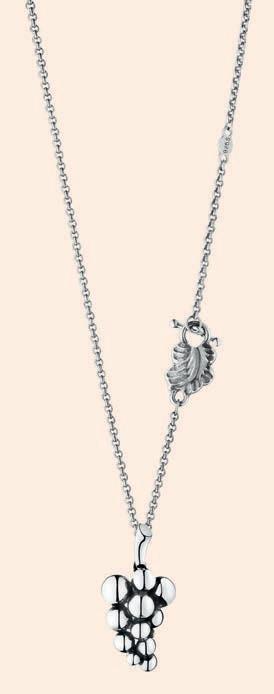
“I’M TOTALLY IN HARMONY WITH THE CITY’S CREATIVE COMMUNITY; IT’S SMALL, AND WE ALL KNOW ONE ANOTHER, WHICH IS WHY WE’RE READY TO SUPPORT AND HELP EACH OTHER.”





TIMELESSLY CLASSIC YET ALWAYS UPTO-DATE , the Georg Jensen brand continues to excite us with new designs. Its coveted jewelry and home décor items become integral to their owner’s style, presenting a personal viewpoint and a lifestyle philosophy at the same time. The brand’s distinctive designs are born of creative collaborations with bold designers and inspired by superior craftsmanship and high aesthetic principles.
From the Vivianna bangle watch that was designed in 1969 and recognized as a masterpiece of understated Scandinavian design to the sleek and slender HK Pitcher conceived by legendary sculptor Henning Koppel, each iconic creation at Georg Jensen is a statement in itself.
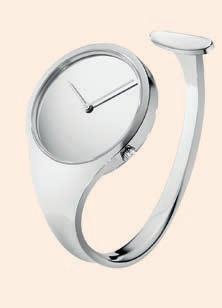
With over a century of experience in design, Georg Jensen is always looking ahead and bridging the gap between yesterday and tomorrow. Its recent Moonlight Grapes Collection, inspired by a 1920s silver design, reflects a strikingly contemporary attitude that marries Art Nouveau aesthetics with a modern expression. Including a necklace, ring and earrings, this enthralling collection is crafted in sterling silver and diamondset 18K gold in asymmetrical shapes.

With modernity comes color, and the HK Pitcher is now set to a fresh palette of vibrant hues that brings the mid-century original design into the present. Even this modern revision, however, is tied to the past; the shades of blue, purple and green that have been used were inspired by Henning Koppel’s original 1950s sketches, retrieved from the Georg Jensen archives in Copenhagen, in yet another move that blends past with present, classic with modern, and graceful with audacious. n

HALF SOUTH AFRICAN and half German, the ceramicist-textile designer explains why he remains loyal to Athens, even though at times his family begged him to leave.


“I lived in East London, and then in Milan and Naples for many years. In mid-2015 I came to Athens for a short vacation and never left. Nightlife in London was over for me when all the legendary bars began being con verted into shoddy, outrageously expensive apartments. London and Milan sadly became more like New York, very strait-laced cities that were all about money.
“Athens looked like the perfect choice, and I allowed it to charm me. Its youthful vibes remind me of the simmering energy of East London in 2005. It also reminds me quite a lot of Naples, the most absurdly impressive and dangerous city I’ve ever known. Athens and Naples are like ancient twin sisters. Everyone in my professional environment was shocked when I chose to move here. My family, too, begged me to leave. But you can’t leave Athens when you love it just a little more than you hate it. The reality I experience here as an artist is a sense of insecurity, as if I’m caught inside some sort of personal bubble. My studio is in Kerameikos, a neighborhood near
the city center where ancient pottery workshops once stood. I work on fabric for men’s clothing for both Greek and international markets, and I also exhibit and sell my modern ceramic items. I’m very fortunate to have the support of a brilliant curator, Panos Giannikopoulos, who spurs me into action and helps me overlook the fact that Athens can be quite a harsh city. Although it exhausts me, I cannot imagine creating anywhere else, at least not for now. It may be that my ‘somewhere else’ turns out to be a remote bucolic village in the Greek countryside the present-day European dream!
“The city, Greece in general, and the eastern Medi terranean region as a whole, are all significant influences for my work. In whatever I create, you’ll find elements of injustice and tragedy, grief and loss, concepts inevitably shaped by the turbulent Mediterranean and this hypnotic, melancholic creature that is Greece.”
“EVERYONE IN MY PROFESSIONAL ENVIRONMENTWAS SHOCKED WHEN I CHOSE TO MOVE HERE. MY FAMILY, TOO, BEGGED ME TO LEAVE. BUT YOU CAN’T LEAVE ATHENS WHEN YOU LOVE IT JUST A LITTLE MORE THAN YOU HATE IT.”
A boutique getaway located a stone’s throw from the beating heart of Athens, committed to offering travelers excellence in hospitality.

Altar Suites presents a unique intersection of past and present, set amidst the modern urban landscape of downtown Athens and steps away from the Ancient Agora. Besides the building’s emblematic location, Altar’s name pays tribute to the Altar of the Twelve Gods, one of the most distinguished precincts in the Athenian Agora, as well as the central marker for calculating distances from the city.
Featuring only 16 rooms and suites, Altar Suites feels truly ‘boutique’; intimate and luxurious. It is the ideal home base for visitors looking to experience the creative and inspiring energy that makes this ancient area so vibrant. Its’ design is rivalled only by the spectacular views of the Acropolis and the premium location paired with refined comfort & luxury.
Cocooned within the heart of the city at Astiggos Street, this brand-new elegant property in the heart of Athens feels both modern & timeless.
Welcome to your new favorite spot in the Greek Capital!

Discover classic charm and elegance in the neighborhood of the Twelve Gods!
HER QUEST FOR EXPERIMENTATION and her own artistic voice brought the ceramicist to Athens, where, she feels, time seems to move at a slower pace than elsewhere.
“My roots are based in both France and China. I studied product and textile design in Paris, after which I wanted to try and live somewhere else to experiment and find my own artistic language. I moved, on instinct, to Athens to work in ceramics, which is now my principal activity. I also work with beeswax.

“My time here has helped me develop my sculpting abilities. I’ve collaborated with local artists, designers and organizations on many projects and exhibitions. For the first few years I lived in Plateia Viktorias, then in Peristeri, and later in Votanikos, before finally moving to Merkouri Square in Ano Petralona. It’s a charming, diverse neighborhood where I feel that I’m at the center of everything. I’ve made friends of all ages and origins. I enjoy daily walks on Filopappou Hill, where you find a diferent sense of time and space. All over Athens, time seems to move
at a slower pace, and everyone treats public spaces as extensions of their home. You find friendly, hospitable people everywhere, ready with a warm greeting, as well as individuals who genuinely care about the neigh borhood strays.
“What I don’t like is the traffic and the fact that no provision is made for wheelchair users. I wish the city were more welcoming to all. From an artistic viewpoint, Athens is an unlimited source of inspiration. Of course, being an artist here can be challenging, especially when selling your work. I find it difficult and rely on my connections in other countries. Nevertheless, here you can easily find affordable space to work, which is virtually impossible in Paris, for example. Athens has a sense of community and mutual support, which I find moving, and the city allows you to experiment, to think and develop an idea with complete freedom.”
“ATHENS HAS A SENSE OF COMMUNITY AND MUTUAL SUPPORT, WHICH I FIND MOVING, AND THE CITY ALLOWS YOU TO EXPERIMENT, TO THINK AND DEVELOP AN IDEA WITH COMPLETE FREEDOM.”
Herodion Hotel is more than accommodation and doesn’t provide only a room to stay. It’s a place where timeless elegance and contemporary design meet the rich historical heritage of Athens. The hotel has been hosting guests from all over the world for the last 47 years.



Philippos Hotel: The guests of our hotel live a remarkable experience in a city that celebrates its rich past in every way. The cosy and chic ambiance of the interiors is enhanced with contemporary elements while our premium services give to accommodation a new meaning.

Point-a: At the 5th floor of Herodion hotel, you can find an urban paradise of unique allure and live the gastronomy experience at the top.
Atrium: is a wonderful greenhouse full of light that operates all year
long. A remarkably inviting space with sofas, a fire-place, a classic 360o bar made from walnut wood and tables.


Gargaretta: The name of one of the oldest neighborhoods of Athens, which tends to be forgotten with the passage of time. If you are looking for an inspiring and entertaining bistrot, you are in the right place.


Apartments: Residential hospitality the new step: The Acropolis View Residence and the Herodion Family Apartment are the new additions under this Hospitality Group’s umbrella that underline the Group’s forward-looking philosophy and embrace the needs of modern travelers. Large, independent spaces where one can enjoy privacy but also the exclusive services of the Herodion Hotel: from breakfast and Jacuzzi, laundry and room service to priority for reservations at Point-A.

A VISUAL ARTIST AND co-founder of Noucmas, a non-profit studio and exhibition space in Kypseli, Vincent believes Athens is special because it has an emotional effect on its residents.

“I moved to Athens in 2017 after completing my studies, driven by a need to make a new beginning far from Paris. I found a city full of life and creative people, such as Katerina Charou and Olga Souri, with whom in 2019 I co-founded Noucmas, a space we use as our studio and gallery for other artists. I came into contact with many talented Greek artists, primarily young, around my age, who had either returned after studying abroad to support their country or who had never left, struggling through economic hardship to realize their dreams, working with some very im pressive ideas. I was stimulated by the willingness to act collectively that I found here. After a while,
of course, I realized that this willingness goes hand-in-hand with a prolonged state of collective disappointment, making me feel lethargic when I stay here for an extended period. Athens has this ability to mix such contrasting elements and make it appear as if they’ve always co-existed.
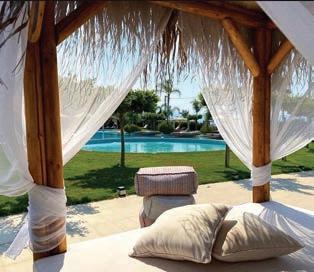
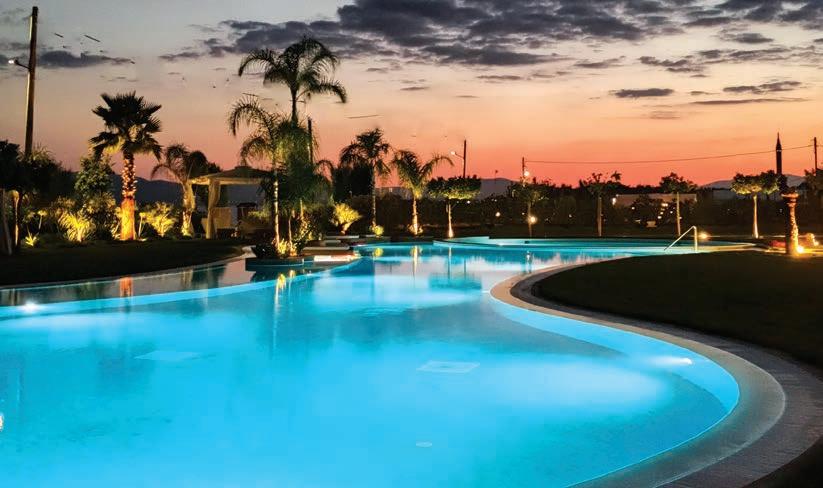
“Although I learned to speak and read Greek, the longer I spend in Athens, the more I feel I’ll never understand what’s happening around me. This city is like a house that belongs to no one. Everyone’s from somewhere else. This is true of my neighborhood, Plateia Amerikis, too. All my neighbors are so unlike one another that it’s our diversity that connects us.
“In my eyes, Athens is beguiling because it intensifies emotions. Here, you experience every thing more powerfully. Its energy is in constant flux. It appears to inhale the light and exhale the darkness at a frantic pace. Why does Athens breathe so quickly? One might say because it is tired. It is trying really hard.”
“ALTHOUGH I LEARNED TO SPEAK AND READ GREEK, THE LONGER I SPEND IN ATHENS, THE MORE I FEEL I’LL NEVER UNDERSTAND WHAT’S HAPPENING AROUND ME.”
ELYSIAN LUXURY HOTEL & SPA 5 ***** introduces a brand-new holistic holiday experience and redefines the essence of luxury accommodation in Kalamata. Located on a waterfront property where the endless blue of the Messinian sea meets the blue of the clear Greek sky.






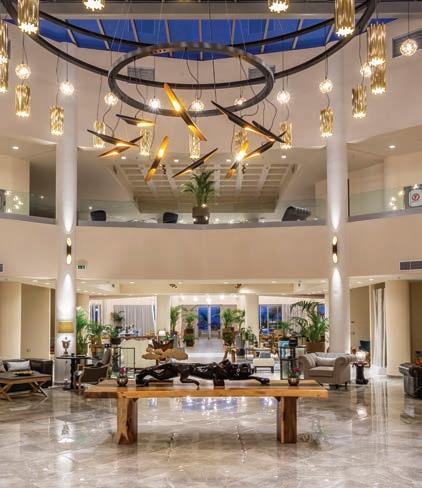
Set amidst a serene landscape, embraced by the endless blue of the sea and adorned with windswept palm trees, our infinity shaped swimming pool invites you to enjoy summer time at its best. Take in the view while you laze around the pool surrounded by gazebos and sun beds.
An elegant collection of 44 luxury rooms and suites with 22 private pools welcome our guests to an oasis of splendor. Choose one of our 22 luxury rooms or 22 luxury suites from a palette of colors that captivate the infinite white, the light blue, the soothing colors of the earth, the stylish grey or black, and the mysterious deep violet.
EVEN THOUGH SHE BECAME an Athenian several years ago, this French artist still finds charm in those typical city moments such as when her local kiosk owner cheerfully calls her “Darling.”

“I decided to move from Paris to Athens five years ago, after a difficult period in my personal life. I was handling health problems, a divorce, and a massive disappointment in my professional mentor. Out on a limb, without anything to hold onto from my previous life, I needed a change. I spent a wonderful summer on the Greek islands and met someone who inspired me to live in Greece, supported my artistic efforts, and introduced me to many of my current friends.
“In contrast with Paris, where you feel you can’t escape the concrete, Athens has the sea close by, which liberates you. Also, as a woman, I feel safe here. I’ve never been followed on the street, insulted, pressed to give my telephone number, or groped on the metro – all of which can be dai ly occurrences in Paris. I like the Greek language, especially the slang, and the kiosk owners who call me ‘Gorgeous’ or ‘Darling,’ terms they might
use with their niece or a passing cat. I like the familiarity in the energy of Athens and how close you can get to its rich history. It’s amazing you can sit on the same slab of marble that someone sat on thousands of years ago. What I don’t like at all is the heavy traffic!
“I’ve recently become a member of Sek tor30, an artist-run workspace with workshops for sculpting and engraving. I go to Neos Kos mos on my skateboard daily, working alongside other artists. I would definitely not be able to afford such a space anywhere else. Many artist friends have been able to rent workshops and homes in Athens for far less money than they would have to spend in London, Paris, Berlin or Rome. I’ve also observed that, in Athens, when you say you work in the arts, everyone shows respect and interest, something that does not often happen in France, where you might be considered lazy or even a little strange. One of the most valuable gifts from my time here is that ‘Greekness’ that has become an inexhaust ible source of inspiration, investigation and cre ation for me. My sculpture is deeply influenced by Cycladic art, and my emotions have become built around a specific Greek concept, ‘harmol ypi,’ which literally means “joyous sorrow” and is used to express a bittersweet feeling. Athens has gifted me this emotion.”
Diane Alexandre @dianealexandre
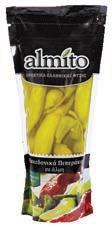
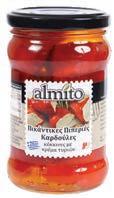
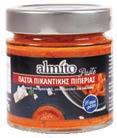
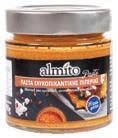
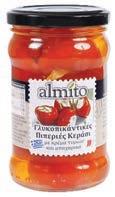
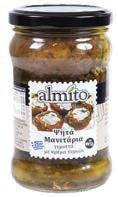

The prospect of relocating to Greece, at least for the winter months, has become more attractive due to the international energy crisis. A series of initiatives and policies have kept the cost of electricity at levels lower than many other European countries, while at the same time offering incentives for energy-saving upgrades.
 SPONSORED BY
SPONSORED BY
GREECE IS ONE OF THE LEAST EXPENSIVE European countries as regards electricity prices. With the resources contributed by energy providers – in particular the Public Power Corporation (ΔΕΗ), which holds the largest market share – Greek consumers are enjoying low prices, despite the global energy crisis.
At the same time, electricity suppliers are helping households prepare for what’s to come with “smart e-consultants” such as those available at ΔΕΗ, offering customers personalized and practical advice on how to access incentives for switching to more cost-efficient and environmentally friendly heat pumps and for installing photovoltaics.

So, if the cost of energy is a deciding factor in choosing a place to live on either a permanent or temporary basis, Greece holds an advantage over other European countries. In a highly volatile environment, consumers in Greece can count on price stability for the next several months, and can look forward to opportunities for energy upgrades and other measures, including assistance in the replacement of energyconsuming appliances as well as targeted investments that will guarantee savings without making customers change consumption habits.
With all this to offer, how can we best convince an ex-pat – or even a skeptical Greek – of the energy advantages this country holds over other nations? We’ve assembled some strong arguments, including a state-supported mechanism for households and businesses that’s likely to be adopted by other European countries, as well as actions ensuring power sufficiency and clear incentives to make energy-saving investments provided by both the Greek government and by electricity suppliers.
THE EU HAS YET TO BUILD a mechanism acceptable to all its member states to keep down natural gas prices and, by extension, electricity prices. In Greece, the government and power-generating companies introduced in July 2022 a mechanism that guarantees stable – and comparatively low – electricity prices for households and businesses. According to the Household Energy Price Index (HEPI) for September, the final price (with all individual charges included) of one kilowatt-hour of electricity in Athens was 0.2952 euros, compared to the 0.3461-euro average of the 27 EU member states. London, Helsinki, Stockholm, Amsterdam, Copenhagen, Berlin, Brussels, Rome, Prague, and Vienna are European capitals with significantly higher prices than Athens. Moreover, the short-term forecast is that Greece will improve its ranking compared to other European countries.

GREECE HAS NOT BEEN CUT OFF from the supply of Russian natural gas, but it has prepared for this eventuality. Lignite units are operating, and natural gas units can, if necessary, be converted to produce electricity using oil, while the Revythoussa facility has already doubled its production capacity in terms of liquefied natural gas (LNG) conversion. The uninterrupted supply of electricity to Europe was not guaranteed a few months ago when Russia permanently cut off the flow of natural gas via the Nord Stream pipeline under the Baltic Sea. Now, however, energy security is no longer in question.
ELECTRICITY IN GREECE is subject to a VAT rate of only 6%. While Belgium, the United Kingdom, Malta, Poland, and Spain enjoy a similar rate, most European countries have chosen to apply the standard VAT rate on electricity. For example, in Austria, Latvia, and Lithuania, the rate is 17%; in Denmark, 20%; and in Hungary, 21%. Of course, electricity is also subject to excise duty in addition to VAT. Again, the sum of all charges in Greece amounts to 19% of the final price, half that of Denmark (38%) and significantly lower than the UK (33%), Germany (26%), and Finland (24%).
THE GREEK GOVERNMENT AND PPC have introduced a set of incentives and disincentives to encourage consumers to save energy. ΔΕΗ charges households that exceed a certain consumption level more for their electricity, while the government subsidy calculation mechanism does the same thing but with a difference: in addition to the counter incentive, there is also an incentive. Anyone who manages to reduce consumption by 15% compared to last year receives a significant discount on their bill. Thus, energy savings are compensated twice: the bill goes down, and the charge per kilowatt-hour is reduced.
 SPONSORED BY
SPONSORED BY
WHILE GENERIC ENERGY-SAVING advice can be helpful – the European Commission has adopted relevant directives for all its citizens – nothing beats personalized guidance tailored to the needs of each consumer. ΔΕΗ allows each consumer to compare their electricity consumption with the average in their neighborhood or broader area and, by doing so, to set a specific goal. This approach is more effective in helping consumers realize that investing in a building upgrade is the best way to save energy and money. More power saving is achieved through installing windows with a thermal break and double glazing compared to old wooden window frames with single glazing. Heat pumps are more efficient than traditional heaters. Heating domestic water with a solar water heater is cheaper than an electric resistance heater. Τhe platform of ΔΕΗ asks consumers to enter data on the use of electrical appliances and calculates how much energy they will save if they replace them.

HOUSEHOLDS ARE ALREADY being encouraged to install photovoltaics and turn into energy producers. A subsidy program for installing 200,000 photovoltaic panels on the roofs of homes and businesses is expected to begin soon. With more days of sunshine in Greece compared to other European countries, the return on investment in photovoltaics is more significant.

STILL A TECHNOLOGY UNFAMILIAR to many people, heat pumps harness heat from ambient air to produce at least four thermal kilowatt-hours, using only one kilowatt-hour of electricity. In other words, if the heating cost for an electric radiator is 0.24 euros per hour, with a heat pump, it drops to 0.06 euros – one-quarter of the cost! Europe is already rushing in this direction, with Germany ordering and installing hundreds of thousands of such devices. Greece is following suit. In addition to government programs to subsidize the installation of heat pumps, electricity suppliers are also contributing. ΔΕΗ, for example, has launched a consulting department for heat pumps, introduced a specific pricing policy, initiated collaborations with major heat pump producers, and offered discounts for purchasing such devices.
WHY IS GREECE FAMOUS ALL OVER THE WORLD? For mild weather conditions and plenty of sunshine! Simply put, it is easier to heat your home when the average temperature, even in the winter, is above 10 degrees Celcius (Athens data, 1991-2020). No matter how you look at it, the mild Greek winter is an advantage during an energy crisis!
Increase in power produced from Renewable Energy Sources with the aim of reaching a share of 40% in 2026.

Immediate installation of 1,000 charging stations throughout Greece, projected to increase to 10,000 in the medium term.
New GreenPass service guaranteeing consumers that the energy they consume is being offset by energy produced from renewable sources.
Significant reduction – of 49% –of lignite production between 2019 and 2021.
SPONSORED BYThis year, Athens was crowned Europe's Leading Cultural City Destination at the World Travel Awards. Its major museums will indeed feed your soul, but it's the neighborhoods around them that will quench your thirst, quell your hunger and satisfy your shopping needs.Here are some of our favorite spots.
TEXT: ELEFTHERIA ALAVANOU & NENA DIMITRIOULeft: Paul Klee, "Dynamics of a Head," The Basil & Elise Goulandris Foundation.
Right: The Archaic Acropolis Gallery on the 1st floor of the Acropolis Museum.


Designed by Bernard Tschumi, the new Acropolis Museum opened its doors in 2009, on the most popular pedestrianized street in the city with stunning views of the Sacred Rock, home to the most significant structures of classical antiquity.

THIS MODERN MUSEUM , con structed to meet the latest operational museology standards, has put pressure on the British Museum to return the marbles removed from the Parthenon by Lord Elgin in the early 19th centu ry. Today, the Acropolis Museum is the most popular archaeological destination in the country, welcoming nearly two million visitors during the year before the pandemic.
The museum's thematic sections unfold over four levels: the ground floor showcases findings from the sanctuar ies and the settlements that occupied the slopes of the Acropolis across all historical periods. The first floor pres ents almost the entire history of the site in a circular route, from the 2nd mil lennium BC to the end of antiquity. The third floor, the Parthenon Gallery, showcases the relief sculptures exactly as they crowned the temple, wrapped around a rectangular core that mirrors the precise orientation and dimensions of the Parthenon cella. Original marble sculptures are combined with plaster copies of those pieces held by the British Museum and other foreign mu seums. The steel columns of the hall
Treflect the Parthenon's columns, and the colossal figures once displayed in the two temple pediments have been mounted on pedestals on their respec tive sides, where they are visible from all directions. The glass walls enclosing the gallery allow a direct line of sight between the sculptures and the Parthe non itself, creating a spectacular setting that never fails to inspire awe.
An archaeological excavation under the building reveals details of life in the ancient city from the 4th century BC to the 12th century AD. Streets, resi dences, baths, workshops, and graves comprise an evocative mosaic that is no less impressive than the other exhibits housed in the museum.
One of the most beloved streets of Athens is the pedestrianized Dionysiou Areopagitou that begins opposite Hadrian's Arch and ends at the foot of Filopappou Hill. This beautiful 830-meter street, paved in marble, brings ancient and modern Athens together, joining the Parthenon and the Roman-era Odeon of Herodes Atticus to the stately Art Nouveau and neoclassical mansions, and the artful pathways designed by Greek architect Dimitris Pikionis (1887-1968).
• The Acropolis Museum, 15 Dionysiou Areopagitou, open Mon-Thu 09:00-17:00, Fri 09:00-22:00, Sat & Sun 09:00 -20:00, admission: €5, theacropolismuseum.gr. The museum's café -restaurant has a terrace with a marvelous view of the Acropolis.



Grab a pie You rarely see Athenians lining up outside stores, and certainly not for bread or other bakery goods. But at the Takis Bakery, aka Artopoiotis, which means “Qual ity of Bread,” you’ll often spot a line waiting patiently for goods such as delicious little cheese pies made with buttery kourou dough, traditional bread rings coated with sesame seeds, warm croissants, delicious sourdough bread, French baguettes, or delectable Amer ican-style cakes. You won’t have any trouble finding it – just follow your nose! 14 Mis araliotou, Tel. (+30) 210.923.0052 Aperitivo time On a narrow street just a four-min ute walk from the Acropolis Museum, there's a very popular spot. Drupes Spritzeria isn't high-end, but it has good vibes and a laid-back clientele happy to stand, drink and chat at its wooden counters. It serves fine charcuterie and cheeses, Italian wines and various versions of spritzes. 20 Zitrou, Tel. (+30) 697.030.0404 Pasta and whiskey Alexan dros, a former ship's captain, opened a bar-bistro just a few steps from the Acropolis in the early 1990s. For the past 30 years, his establishment Duende has remained unchanged and perennially popular with the after-theater crowd, couples desiring a romantic eve ning out, and whiskey lovers. It is a dive bar (in the most positive sense possible) with jazz music. Alexandro's wife, Rena, is in charge of the menu, and her spaghetti bolognese has become well-known among the city’s night owls. 2 Tzireon, Tel. (+30) 210.924.7069 Treasures from the earth The young couple behind the almond green door at the Ellinika


Kaloudia deli on Hatzichristou Street next to the Acropolis Museum has been running the business for the past 15 years. The enterprise, which started as a small neighborhood grocery store selling everyday essentials, is now an institution on the Athenian gastrono my scene, offering an enviable range of local cheese and charcuterie products, handmade pasta, exceptional extra virgin olive oils and many deli delights. 8 Hatzichristou, Tel. (+30) 210.922.4060 Lalaounis legacy The beauty and craftsmanship of Greek and world jewelry, from its glorious past to the creative present, are on display at the Ilias Lalaounis Jewelry Museum. Founded by master jeweler Ilias Lalaounis, the museum is one of the very few in the world dedicated to jewelry and the decorative arts. If you make your way there by December 10th, check out the temporary exhibition “Form Follows Function: 200+200 Decorative and Applied Arts, 1621-2021.” 12 Kalisperi, lalaounis-jewelrymuse um.gr A Post-Industrial Venue for Contemporary Art A short distance southwest of the Acropolis Museum is the National Museum of Contemporary Art (EMST), housed in the former FIX brewery. The original 1893 building was redesigned in 1957 by Modernist architect Takis Zenetos (1926 - 1977). A stellar example of postwar industrial inno vation, this enormous structure was reborn as a museum in 2016, after a complete reno vation and many years of interventions. The collection includes important contemporary paintings, sculptures, and installations by Greek and foreign artists. (emst.gr, Mon closed, Thu 11:00-22:00, all other days 11:00-19:00. Admission: €8).


Art lovers visiting Athens will be pleased to learn that the city's two greatest collections of paintings, with some 1,200 works in total, are just a kilometer apart.

At the National Art Gallery, where works by leading Greek artists share the space with creations from their international colleagues.
WWHEN THE NEW BUILDING of the National Art Gallery was deliv ered, Greece was celebrating the bicentenary of the revolution that led to its national freedom. The newly reno vated National Art Gallery is proof of the incredible journey that the Greek visual arts has taken over the last two centuries.
The impressive new glass-andmetal structure more than doubled the available exhibition space of the old building, allowing at least 1,000 artworks to be exhibited from a per manent collection numbering over 20,000. You'll find the works of all the major Greek artists, including Niki foros Lytras, Nikolaos Gyzis, Theophilos, Konstantinos Parthenis, Konstan tinos Volanakis, Yannis Tsarouchis, Yannis Moralis, Nikos Engonopou los and Nikos Hadjikyriakos-Ghikas. Through their works, you can trace the styles and movements that flour ished on the Greek art scene, including marine art, orientalism, ethnography, portraiture and modernism.
Special mention should be made of the works of Domenikos Theotoko poulos (El Greco), one of the greatest artists this country has produced, as well as of the works of female artists who thrived in a largely male-dominated world; for instance, the “Girl on the Shore” (oil on canvas, c. 1922-1925) by Greek artist Thalia Flora-Karavia. One of the most notable artworks is undoubtedly “Street Market” a depiction of colorful human figures by Panayiotis Tetsis, which you'll see as you enter the museum.

A newly opened wing features rt works by leading artists from other European countries. Among these pieces is “Woman's Head”(1939) by Picasso; the artist gifted the work to the Greek people in honor of their role in the Resistance. The Basil & Elise Goulandris Foundation Not far from the National Gallery is the wonderful Ba sil & Elise Goulandris Foundation. In Greece, there have been many instances of wealthy art lovers, usually from the world of shipping, who have developed significant private collections, and Ba sil and Elise Goulandris fall into this category; the name of their foundation graces an international-caliber art museum featuring paintings and sculptures created by leading 19th and 20th-cen tury artists, individuals who shaped the creative movements of their time and had an impact on the way we think today. The perception of freedom and the definition of beauty are just a few of the issues these masters were contemplating as they created some of the masterpieces on display at the museum; highlights include “Little Dancer” by Degas, “Coun tryside in Auvers-Sur-Oise” by Cezanne, “Eternal Springtime” by Rodin, “Olive
• The National Art Gallery, 50 Vasileos Konstantinou, open Mon, Wed-Sun 10:00-18:00, admission: €10, nationalgallery.gr There is a café-restaurant in the museum.

• The Basil & Elise Goulandris Foundation, 13 Eratosthenous, open Wed-Thu & Sat-Mon 10:0018:00, Fri 10:00-20:00, admission: €10, goulandris.gr.
The museum's courtyard café is an urban oasis.
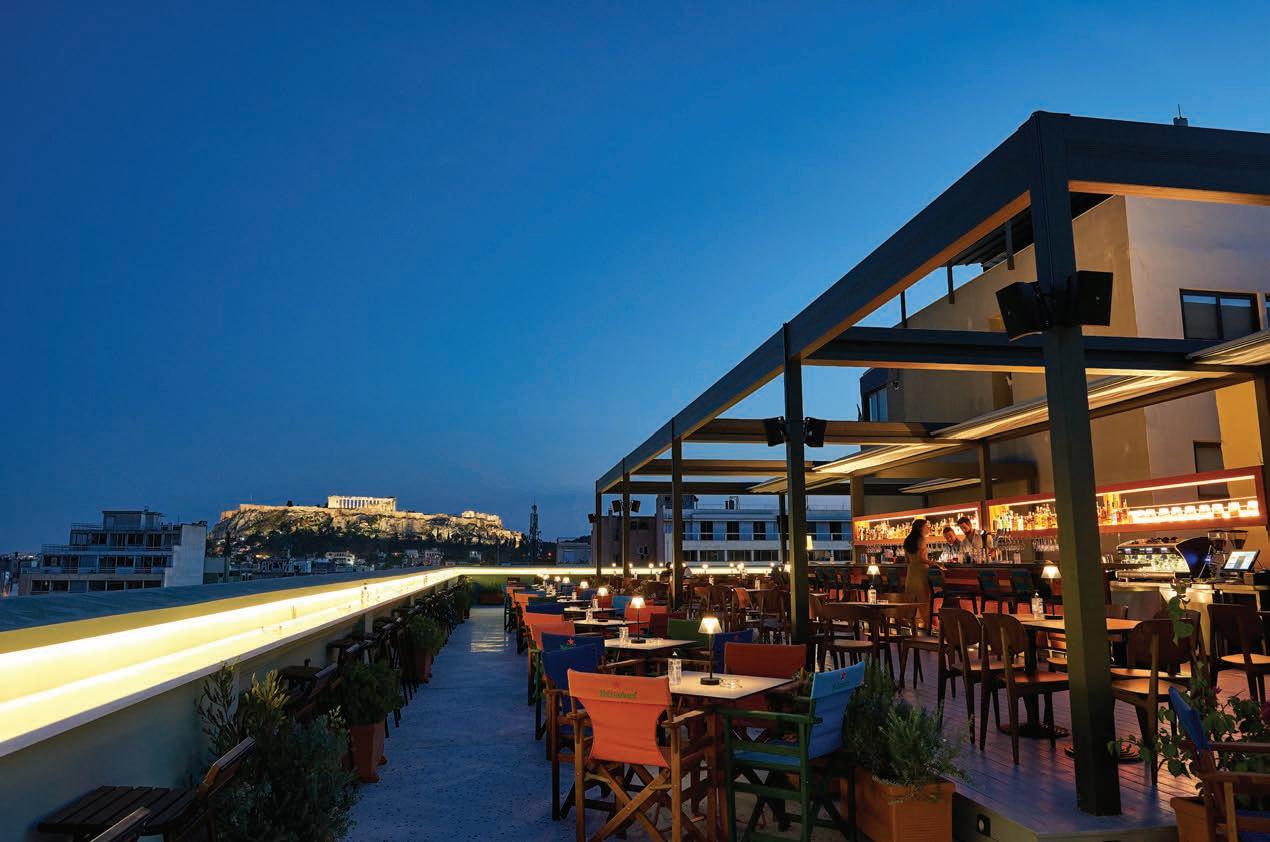
Picking” by Van Gogh, “Nude Wom an with Raised Arms” by Pablo Picasso, “The Grasshopper” by Miro, and “Both Striped” by Wassily Kandinsky, as well as works by Toulouse-Lautrec, Jackson Pollock, Giorgio de Chirico, Francis Bacon and Fernando Botero. Make sure you see Amedeo Modigli ani’s“Caryatid,” a sensual figure bearing little resemblance to the Caryatids at the Acropolis Museum.
infoThe Japanese Garden is located between Vasileos Alexandrou Avenue and Michalakopoulou and Niriidon streets. Here, you’ll find an area of Asian zen in the heart of bustling Athens. Although it extends over 3,500 square meters, it can be traversed within minutes. Nonetheless, with its lush vegetation and plentiful running water, it offers the calming power characteristic of certain aspects of Japanese culture.

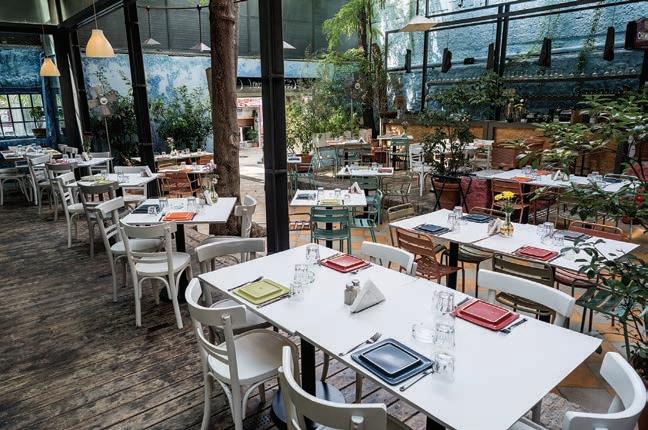
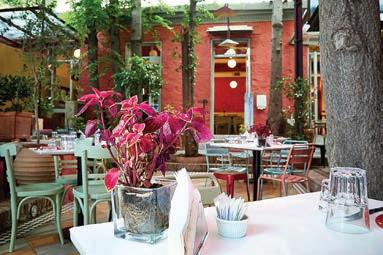

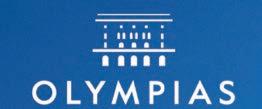





Updating a traditional kafenion The café Louvron first opened in 1937, and there’s clear evidence of this on display today. During the course of modest renovations in 2019, the new owners came across a clipping from the British newspaper The Daily Mail dating from 1938, which they framed and hung on the wall. As for any major changes, they freshened up the place and repaired the old refrigerator, but kept the overall style of the establish ment and preserved its nostalgic atmosphere. Once a hangout for the intellectuals of its time offering “tea with cognac,” Louvron now serves coffee, desserts, and cocktails featur ing Greek spirits (such as the Bloody Mary made with tsipouro), as well as an all-day menu featuring such popular Greek meze as keftedakia (fried meatballs), sausages, and more. 6 Eratosthenous, Tel. (+30) 210.701.6594 Italian sandwiches If you’re not in the mood for a snack at the courtyard café of the Basil & Elise Goulandris Foundation, you might instead opt to walk the short distance to the sandwich shop Borghese for an authentically Italian treat. The charcuterie – everything from mortadella Bolognese with pistachios to porchetta or prosciutto San Daniele – is sliced right before your eyes. The sandwich chef prepares all the sauces, mayonnaises, compotes, pickles, relishes, and jams for the 20 or so options on the menu. We can heartily recommend the one with goat’s cheese, green ap ple compôte, almond flakes and arugula, as well as the spicy BLT with pancetta and chili tomato relish. 19 Archelaou, Tel. (+30) 210.725.0511 Beautiful and delicious Grapes and Salt, a modern delicatessen, opened in the Pangrati area about a year ago. Valentina, the owner, stocks not only some of the best products in the country but also some of the


most beautiful, as she seeks out both quality and appealing packaging. As a result, the store’s shelves are stunning to behold, but it’s what you can buy here that really counts: fine cheeses, charcuterie, wine, pasta and more. We recommend Melima pasta, Esophy chocolates with their unique fillings, natural herbal beverages from Rhoeco in Thessaloniki, and Kiss The Earth peanut butter from the island of Chios. 16 Pausaniou, Tel. (+30) 694.529.5924 Pizza pairing Tre Sorelle, a pizzeria awash in Italian aromas, became a hotspot on Archelaou Street almost from the moment it opened in 2018. Even now that the novelty has worn off, it’s still difficult to find a table here during the peak hours for Athens’ drinking and dining scene – namely, after 20:30. If you’re in the neighborhood and you do find a seat, it’s definitely worth giving a go to this uber-chic pizzeria, which features an impressive marble bar. Be prepared for a tasty match made in heaven: a light aperitivo, sparkling or not, paired with any one of their nine Neapolitan-style pizzas with fluffy dough edges. Their Parma pizza, for instance, goes great with a classic Negroni. 19 Archelaou, Tel. (+30) 211.407.2172 Apparel appeal Eleftheria Domenikou has been designing elegant women’s clothes made from select fabrics, mostly cotton, since 2008. Her style is simple, but her creations aren’t everyday garments; they’re fashion statements. In addition to her clothing de signs, her small boutique, called Hallelujah, on Archelaou Street also stocks jewelry, accessories and some interior design objects; most of these are made in Greece, but there are a few items by select independent designers from abroad. 32 Archelaou, Tel. (+30) 210.723.5210.



In the single square kilometer in the city center that contains three of the capital's most important museums, it's possible for culture fans to stroll through fifty centuries of history and art.

The collection of religious art (including this “Madonna with Child”) at the Byzantine and Christian Museum is extensive.

YOU'LL NEED MANY HOURS, if not days, to explore the collections of the Benaki Museum of Greek Culture, the Museum of Cycladic Art, and the Byzantine and Christian Museum, which
Ytogether cover 5,000 years of art and history, from the Cycladic civilization of 3000 BC to the 20th century.

Created by the Alexandria-born Antonis Benakis (1873-1954), a sci on of one of the leading families of the Greek diaspora and a philanthropist with a larger-than-life personality, the Benaki Museum of Greek Culture is a treasury of Greek art, history and cul ture that should not be missed. Housed in the impressive neoclassical fami ly mansion (an attraction in its own right) of the Benakis clan, the museum’s vast permanent collection will take you on a journey from prehistoric times to the 20th century, exploring all facets of Hellenism. Ancient artifacts and Byzantine icons, elaborate traditional garments and items of jewelry,
paintings and mosaics, and even ev eryday objects, such as an iron axe from Epirus used to prune olive trees, a baglamas (long-necked bowl lute) from Crete and an early 18th-centu ry violin from Asia Minor, compose a captivating national cultural narra tive. If you enter from the side door (on Koumbari Street), you'll find a golden plaque on your right which reads: “Here lies the heart of Antonis Benakis.” This somewhat unusual do nation to the collection was in accor dance with the final wish of the museum’s founder, proving the depth of his dedication to his institution.
On the top floor of the museum is their newly renovated café-restau rant with fine views over the downtown area.
This sumptious reception hall, which comes from a 18th-century Kozani mansion, is on display at the Benaki Museum of Greek Culture.


Established in 2012 in Athens, Greece, ATTIC BLACK features iconic, handmade pottery showcasing the Grecian heritage & culture.


ATTIC BLACK is the retail brand for the ceramic products of the Workshop of THETIS Αuthentics Ltd. It is named after the black glaze of classical Attic pottery (6th-5th century BC) that forms the basis of the expertise of the Workshop.









ATTIC BLACK: THETIS ceramics are hand-thrown, hand painted with clay-based slips and the colours emerge during firing. The slips are produced by carefully selecting and processing natural clays in water. The colours are achieved by following the ancient process known as “3-stage firing” which involves successive stages of firing in oxidizing and reducing kiln atmosphere. The THETIS team has been able to recover and revive the ancient craft and thus offer utilitarian objects whose style, color, texture, chemical composition and microstructure cannot be distinguished from the original. The products include ancient toys, ceramic puzzles, excavation and conservation kits, jewelry, tableware (drinking vessels and other black glazed pottery from the Ancient Agora), cooking pots and artifacts inspired by the prehistoric pottery of the Cyclades and Thessaly. Following the spring 2020 lockdown due to the pandemic, the ATTIC BLACK shop was relocated to our renovated ceramic studio, where pottery and ancient Greek vase painting courses are being provided.
Guided tours to ATTIC BLACK: THETIS’ Workshop are offered free of charge.Contact us to design a unique experience, an outstanding ceramic collection or simply your Athenian souvenir.
The Museum of Cycladic Art fo cuses on the civilization that flourished in the central and southern Aegean archipelago between 3200 and 2000 BC, and on the iconic Cycladic mar ble figurines produced by that society. Unique in form and ingenious in their simplicity, these masterpieces signifi cantly influenced modern art and design. Other noteworthy exhibits in clude the rare “cup-bearer” figurine, the statue of the “Mother Goddess” measuring 140 cm, and the one-off “Dove Vase,” a disc-shaped marble plate with 16 carved doves, possibly used in rituals and considered one of the most remarkable artifacts be queathed to us by the Cycladic marble sculptors. Bring your historical journey to a close at the Byzantine and Christian Museum in Villa Ilissia, the
former winter palace of French noble woman Sophie de Marbois-Lebrun, the Duchess of Plaisance (1785-1854). This impressive building dating from 1848, which looks like it belongs in a knight’s tale, houses much of the mu seum’s collection, comprising 25,000 artifacts from different parts of Greece, Asia Minor and the Balkans, and spanning the period from the 3rd century AD to the 20th century. Of particular interest is the 4th-century statue of a male figure with a lamb on his shoul der, similar to the ancient Greek statue known as the “Moschophoros,” or “Calf Bearer,” but here representing Jesus as the good shepherd, as well as the marble plaques engraved with pa gan and Christian symbols. If weather permits, a stroll through the museum’s beautiful gardens is a treat.
The figurines on display at the Museum of Cycladic Art are artworks from an ancient Bronze Age civilization that flourished in the Aegean.

OF PARTICULAR INTEREST IS THE 4TH-CENTURY STATUE OF A MALE FIGURE WITH A LAMB ON HIS SHOULDER, SIMILAR TO THE ANCIENT GREEK STATUE KNOWN AS THE “MOSCHOPHOROS,” OR “CALF BEARER.”
The War Museum (next to the Byzantine and Christian Museum) has an extensive collection of weapons and military memorabilia. Outside are a number of airplanes, including a 1954 Lockheed single-seat, single-engine fighterbomber, a remnant of an analog era.Vasilissis Sofias & 2 Rizari, open Mon-Sun 09:00-19:00, admission: €6. warmuseum.gr. The museum café is, in fact, a military mobile kitchen parked by the entrance.
info• The Benaki Museum of Greek Culture, 1 Koumbari & Vasilissis Sofias, open Mon, Wed, Fri-Sat 10:00-18:00, Thu 10:00-24:00, Sun 10:00-16:00, admission: €12, benaki.org.
• The Museum of Cycladic Art, 4 Neofytou Douka, open Mon, Wed, Fri-Sat 10:00-17:00, Thu 10:00-20:00, Sun 11:00-17:00, admission: €12, cycladic.gr.

• The Byzantine and Christian Museum, 22 Vasilissis Sofias, open Mon, Wed-Sun 08:30-15:30, admission: €4, byzantinemuseum.gr.


Coffee time Among the many thriving Greek roasteries, Redd stands out for its cosy at mosphere. In this tiny café close to the Museum of Cycladic Art, they serve exceptional espresso in handmade ceramic cups. You can specify just how you’d like your blend – with chocolate or fruity notes, robust or weaker, and sharper or milder acidity – and they’ll make a cup just for you. 8 Kapsali, Tel. (+30) 216.900.2141 Wholesome brunch As enticing as it is tasty, the menu at Me features fresh eggs, cold-pressed juices and energy bowls made with quality Greek products. If, however, you want to enjoy the wholesome food they serve at this attractive spot on a lively, tree-lined street, you’ll have to book a table because seating is limited and the place is extremely popular. 10 Kapsali, Tel. (+30) 210.724.2588 Quality Greek cuisine Papadakis attracts a mixed clientele, from locals in the know to lucky visitors and businesspeople who don’t want to jeopardize a deal with a poor dining experience. Here, everything is always the same: tasty and unpretentious. The emphasis is on seafood, prepared in traditional fashion by a chef who is well known in Greece for her homestyle recipes. The menu features fish soup, orzo with shrimp, and delicious pasta creations made with the freshest ingredients. 15 Fokilidou, Tel. (+30) 210.360.8621 Contemporary art in a stately mansion Dating to 1890, the Deligiorgis Mansion is one of the beautiful buildings designed by architect Ernst Ziller when Athens was just a large village. For the past four years, it has housed the Athenian branch of the Allouche Benias Gallery, founded in New York in 2014. It has already hosted exhibits by several leading Greek and international artists whose work reflects trends in pop culture,

figurative art and neo-expressionism, including Kenny Scharf, Ross Bleckner and Don ald Baechler. 1 Kanari, Tel. (+30) 210.338.9111 Sweet temptation At Sweet Alchemy, the boutique confectionery store run by celebrated pastry chef Stelios Parliaros, everyone gives in to temptation. Dainty chocolates, sweet tarts, Greek-style turron and amazing gâteaux de voyage beckon from glass display cases. If you want something sweet to enjoy while walking, try the cappuccino cream in a small glass, one of the chef’s most notable creations. 24 Irodotou, Kolonaki, Tel. (+30) 210.724.0205 In vino veritas Paliokalias, Gerodetis, Santameriana: the names of some Greek wines can be a bit of a tongue twist er. At the wine store Mr. Vertigo, the experienced staff will know what you’re looking for, even if you can’t pronounce it. Mr. Vertigo specializes in wines made from indige nous varieties, terroir wines, natural and minimal-intervention wines. On its shelves are many bottled revelations, including rare local varieties, limited edition wines and dis tilled spirits of the highest quality that you can take home with you. 15 Filikis Etairias, Tel. (+30) 210.725.0862 For the love of books Are you into fantasy? Classical literature? Greek history? Booktique offers a wide range of books for all tastes and ages, with an extensive bilingual collection (Greek and English), translations and original works by English-speaking writers who lived in, were inspired by, or wrote about Greece. Our rec ommendations include "Athens: City of Wisdom" by Bruce Clark, "The Greek Revolu tion and its Global Significance" by Roderick Beaton, and translated collections of Greek poetry by award-winning poets Kiki Dimoula and Michalis Ganas. 21 Patriarchou Io akeim, Tel. (+30) 210.723.5425


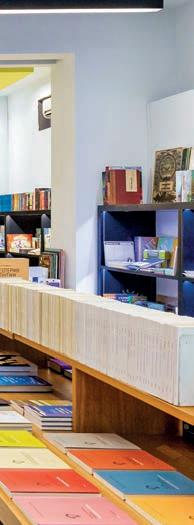


Be prepared for the fact hat you won’t be able to see it all.
At the National Archaeological Museum, the “Jockey of Artemision” (140 BC)

THE NATIONAL Archaeological Mu seum (NAM) is such a vital part of its neighborhood that it has given its name (“Museio”) to the entire area. With more than 11,000 objects spread out over 8,000 square meters of interior space, this is one of the world’s most important repositories of ancient art and the larg est such institution in Greece. Housed in a beautiful neoclassical 19th-centu ry building, NAM is home to some to the most iconic ancient artifacts ever unearthed.
Wander through the centuries, from the 6th millennium BC to the 4th centu ry AD, marveling at exhibits from prehis toric Thira and the Minoan and Myce naean civilizations through to the archa ic, classical and Hellenistic eras, as well as rare discoveries from ancient Egypt, sculptures, figurines, pots and metalwork tools. Among the most well-known ex hibit items is the “Spring Fresco,” created in the prehistoric settlement of Akrotiri on Santorini before that community was buried by an volcanic eruption; the ear ly Cycladic marble figurine called “The Harpist of Keros” (2800-2300 BC); the gold funerary “Mask of Agamemnon” from Grave Circle A in Mycenae (16th century BC); a giant bronze statue from 460 BC that has been identified as de picting either Zeus or Poseidon; pieces of the mysterious Antikythera Mechanism (150-100 BC); and a monumental sculpture of a young horse rider known as the “Jockey of Artemision” (140 BC).
Before leaving the museum, be sure to take a look at its interior garden, restored a few years ago and planted with many indigenous plants and herbs, in cluding oregano, thyme and dittany.

The Pedion tou Areos is the most extensive public garden in the municipality of Athens, an oasis of calm nestled in the urban environment of the city center. This green space is shared by statues of kings, busts of Greek revolutionary heroes, and crowds of residents from the neighboring Kypseli, Gyzi and Omonia. After many years, the locals are rediscovering it as a vibrant cultural venue that periodically hosts art installations, concerts and festivals.
info• 44 28is Oktovriou (Patission), Tue 13:00-20:00, open Wed-Mon 08:30-15:30, admission: €6, namuseum.gr. There is a café in the museum.

Unflinching global news coverage, paired with deep local reporting.


The sourdough spot The area around the Archaeological Museum doesn't offer many no table options for food and drink, so you'll have to walk approximately 10 minutes to the neighborhood of Exarchia instead. There, the Black Salami Microbakery, on eminently hip Zoodochou Pigis Street, specializes in bread and other baked products, all made with natural sourdough. Try the fluffy wild greens pie, the fragrant focaccia or the sandwich of the day. They also do a lovely brunch box with fresh bread and eggs, which you can enjoy on the spot or take with you on your walk. 71 Zoodochou Pigis Unisex and sustainable Young de signer Christina Christodoulou spent much of her childhood at her parents’ clothing workshop. She later studied art history at the Athens School of Fine Arts and went on to receive a Master’s Degree in textiles from the Swedish School of Textiles. A few years ago, after her return to Athens, she created “It’s a Shirt,” a brand of lovely, loose-fitting shirts for guys and girls, made from superior quality Greek fabrics chosen with sustainability in mind. Christi na’s entire collection is available at her industrial-style showroom and boutique in Exarchia. 67 Asklipiou, Exarchiaitsashirt.gr Refuel with wine Tanini Agapi Mou is an Exarchia wine bar offering exclusively Greek natural wines, all products of gentle vinification, a trend recently adopted by many bars and restaurants in Athens. Here, you can choose from 100

labels available by the glass and discover some rare varieties accompanied by recommended food pairings: Roditis with winter beetroot salad or fish tartare; Xinomavro or Mavroudi with fine Greek charcuterie. Don't be afraid to strike up a conversation with the clientele; they're friendly. 91 Ippokratous, Tel. (+30) 211.115.0145 A classic hideout If you're looking for a genuinely cozy watering hole, head down Patission Street, away from the museum and to wards the neighborhood of Kypseli, for about a kilometer or so. Au Revoir opened in 1958, making it the oldest bar in Athens. Designed by the renowned Greek modernist architect Aristomenis Provelengios, the bar has kept its totally 1960s decor intact. Actors, writers, art ists, and journalists regularly frequented the bar before it became more widely known and began attracting a broader clientele. Order something classic, like an Old Fashioned or a Dry Martini. 136 28th Oktovriou (Patission), Tel. (+30) 210.823.0474 Plant parenting Ko pria (“Manure”) opened in 2018 as Athens’s first trendy plant and garden store, selling those exotic photogenic plants you see in modern interior magazines or influential Instagram ac counts, along with a wide range of gardening tools and accessories. The knowledgeable staff will be happy to recommend a plant for your home or a bouquet for that special occasion. The flower arrangements at this Exarchia shop look like items out of a fairy tale. 30 Eresou & Zoodochou Pigis, Tel. (+30) 211.113.2535.



The world’s earliest analog computer, the first robot in history, and the gods of Olympus; masterpieces of ancient Greek, Roman, Byzantine and contemporary art; plants and animals that live on the surface of the earth, in the vastness of the sky and in the depths of the ocean; and illusions that fool the mind and the eye: the museums of Athens can conjure up a magical world for young visitors, sparking their imagination. Tailored programs and tours take them on a journey of experiential learning through play.

At the Acropolis Museum, children can follow different paths of exploration. Specially designed pamphlets for younger visitors highlight subject matter and difficulty levels suitable for different age groups. With these in hand, young explorers can discover the museum’s treasures while exercising their memory, using their imagination, and having fun. One trail, “The Parthenon Sculptures: Six Short Stories of Separation,” takes them to the Parthenon Gallery on the museum’s third floor, where they’ll find out more about what are arguably the most famous sculptures in the world. Through the stories of these masterpieces, they’ll learn how and why some became separated and where they are today. On the trail “Spot the Animals,” the goddess Iris will help children three to five years old find some of the animal sculptures in the museum’s collection, including: snakes; a lion; a small calf being carried as an offering to the goddess Athena; a bear, one of the favorite animals of the goddess Artemis; and an owl, the symbol of wisdom. Number games and quizzes, as well as a mission to help Iris find the Olympian gods, will hold the interest of older children. By the time they leave the museum, these young explorers will have learned some fascinating facts about antiquity. ➢Acropolis Museum, 15 Dionysiou Areopagitou, open daily 09:00-17:00, admission: €5. For more info, go to theacropolismuseum.gr


Can a robot operate without batteries or electricity? Ancient musical instruments and toys, the ancient Greek “smart” home, an innovative wine jug, and an automaton puppet theater are some of the unique interactive exhibits at the Kotsanas Museum of Ancient Greek Technology. From the robotic “servant” of Philo of Byzantium to the mechanized puppet theater of Hero of Alexandria, and from the mechanical clock of Ctesibius to the world’s first analog computer, the Antikythera Mechanism, the technologies on display cover the period from 2000 BC to the end of the Ancient Greek era. The Kotsanas Museum features fully functional replicas of more than 400 inventions, many of which remain relatively unknown. Young visitors will be struck by the similarities between ancient innovations and the origins of modern technology. Ctesibius, Plato, Aristotle and other great minds are willing to share their secrets. Are you ready to join them? ➢Kotsanas Museum of Ancient Greek Technology, 6 Pindarou, open Tue-Sun 9:00-15:00, admission: €12, kotsanas.com
At the Museum of Illusions, nothing is what it seems. Here, anything can happen, and every visit is an exciting adventure that will leave children and parents alike wide-eyed in disbelief. You’ll watch yourself shrink, see double, experience holograms, and even… disappear! Through a series of illusions, visitors will learn that their senses can be fooled and that the world is full of visual percepts that appear to be at odds with reality. A stop here is sure to entertain museumgoers of all ages. ➢Museum of Illusions, 119 Ermou, open Mon-Fri 10:00-21:00, Sat & Sun 10:00-22:00, admission: €10. For more info, go to museumofillusions.gr
How does a child interpret a painting or understand a movement in art? With the help of valuable insights from a tour guide at the Art Collection of the Basil & Elise Goulandris Foundation, children can discover the fascinating stories behind this collection’s unique artworks. Accompanied by the guide, the entire family can visit the museum’s four floors and discuss the paintings and sculptures on display. Children will be encouraged to imitate the movement of Degas’ “Little Dancer,” and imagine just what a Kandinsky painting depicts. They’ll talk about abstraction, or draw a chair as they see it, just as Cézanne did. They can participate in group and individual activities and games with a surrealist slant, adopting the slow-looking approach, based on the idea that to understand a work of art, one must spend time with it. At weekends, there are workshops where children draw inspiration from one of the artworks to create their own, using techniques other than painting, such as screen printing or loom weaving. With a strong focus on participation, personal experience, and free expression, the museum's family tours have been designed specifically to create a shared experience based on the interaction of family members and their responses to the artworks on exhibit. ➢Basil & Elise Goulandris Foundation, 13 Eratosthenous.The guided tours are by appointment only, for groups of up to 10 visitors (children and parents), and last 75 minutes. For more info, call Tel. (+30) 210.010.2156 or send an email to education@goulandris.gr, goulandris.gr


As they explore the fantastic collection of the Goulandris Natural History Museum, visitors learn about the reptiles of the world, from the Caretta caretta sea turtle to the Nile crocodile (there is even an accurate replica of a Triceratops), as well as 180 species of birds that nest in Greece, along with birds from Africa and Central America. In the museum’s entomological exhibition, they can admire butterflies and other species of insects from various countries, while the mammal collection includes the kangaroo, koala, lions, leopards, baboons, and giraffes. The botanical exhibition provides the perfect introduction to the plant kingdom. The museum also has halls dedicated to marine biology, featuring an impressive collection of shells from the Greek seas; paleontology, with characteristic samples of fossils; and geology, with an extensive collection of rocks and minerals. All exhibit descriptions are in Greek and English. ➢Goulandris Natural History Museum, 100 Othonos, Kifissia, open Mon-Fri 09:00 -14:30, Sat & Sun 10:00-15:00, admission: €10. For more info, go to gnhm.gr
When was the term “telecommunications” first used? How did signal fires (“fryktories” ) work, and when did the ancient Greeks use them to communicate? The OTE Group Telecommunications Museum answers these and many other questions and offers guided tours of its permanent collection in English (subject to booking) so that young visitors and their parents can become acquainted with preelectric technologies as well as the hydraulic and the optical telegraph, the great inventors of the electric telegraph and telephony, and the development of communications in Greece. ➢OTE Group Telecommunications Museum, 25 Proteos, Nea Kifissia, Mon-Fri 10:00-17:00, every other Sun 10:00-17:00, admission free. For more info, go to otegroupmuseum.gr/en/visit/
The Hellenic Children’s Museum focuses on offering an interactive and participatory experience, encouraging children as young as eight months old to play with, touch, and use different toys and other objects. Depending on their age, children can explore the various rooms and have fun with everything from sensory toys, water, soap and bubbles for the little ones to role-playing games, music, and painting for their older counterparts. In “The Kitchen,” they learn to cook together (with the help of onscreen instructions) and to experiment with their own recipes, as they get a taste of cooperation and teamwork before finally tasting the results of their efforts. “The ABC of Nutrition” is a small-scale version of a supermarket, complete with a bakery section, a fruit and vegetable aisle, a butcher’s counter and a seafood stall; children can play different roles (e.g., storekeeper, customer, employee) while learning all about healthy eating habits, a balanced diet, and consumer awareness. They can also visit “The Attic” to find out more about objects from the museum’s collection and learn about daily life in the mid-20th century. ➢Hellenic Children’s Museum, 19 Vasileos Georgiou II, open Fri 17:00-20:00, Sat & Sun 11:00-15:00, admission free, but visits must be booked in advance at info@hcm.gr. For more info, go to hcm.gr/english/





“ON ANY GIVEN DAY, I’LL COME ACROSS THE MAN FROM THE LOCAL BETTING SHOP PLAYING BACKGAMMON WITH THE OWNER OF THE FUNERAL HOME NEXT DOOR, OR HELP LOST TOURISTS FIND THEIR AIRBNB.”






co-founder of the publishing house Doma Books
DOMA BOOKS was named after the Greek word for rooftop apartment, doma, like the one Marina shared with her partner Thanos Samartzis in Mets. This publishing house is a labor of love - love for books, for Athens, and for the neighborhood itself.
“Sky everywhere. 360-degree views. Mount Ymittos on one side, the Acropolis on the other. Lycabettus Hill a bit further, and in the distance, as far as the eye can see, the sea. The city is all around: rooftops with countless antennas, shiny solar heaters, laundry lines with clothes drying, as well as tidy balconies with potted flowers. On the streets below, there are cozy coffee shops and restored neoclassical homes. We’re in a neighborhood dominated by the First Cemetery of Athens, imposing in its expanse and silence. Mets is near the city center, but not at its core: in proximity to its conversations but away from its chatter. It straddles two hills, Ardittos and Logginos, along the ancient course of the Ilissos River that now lies beneath a busy thoroughfare. Here, mere mortals live side by side with the eternal dead.
“This is the Mets I discovered and fell in love with when I first came here: a happy contradiction of the old and the new, of the traditional and the modern. Picture a neighborhood where you can find trendy coffee shops abutting somber funeral halls where mourners are served Greek coffee and cognac, for one final toast to their departed. Mets is small, like a doma, but nonetheless feels much bigger than its actual size.
“On any given day, I’ll come across the man from the local betting shop playing backgammon with the owner of the funeral home next door, or help lost tourists find their Airbnb while I shop for vegetables at the grocer’s, or argue with drivers for driving too fast down narrow streets past old ladies feeding stray cats on the sidewalk. This is where I’ve put my daughter to sleep as notes from the piano of the late composer Thanos Mikroutsikos wafted in through the window. At the neighborhood café, I sip my coffee while two octogenarian physicists discuss beauty quarks and the latest discoveries at CERN and I watch ladies pop out to the shops in elegant dressing gowns.
“Τhe rents around here are as high as the soaring ceilings in the elegant mansions lining

the streets. There’s never anywhere to park, and yet I always find a place. The marble artisans and the skilled wreath makers are always hard at work and always smiling. The Odeon Café (19 Markou Mousourou) is where I conduct all my business meetings, at the table next to the double bass. It’s on the same street as the grocery store owned by Tasos and Rena, where everyone shops on a daily basis, and Chrysa’s veterinary clinic, which welcomes all sorts of unexpected visitors in need of help.
“This is where Doma Books was born, in the rooftop apartment of a six-story building. Up high, word by word, sentence by sentence, our first book, ‘The Freedom of Epictetus,’ was created. The text was translated by my partner, Thanos Samartzis, from Ancient Greek. It was printed on our printer, and a few collectible, limited-edition copies were distributed to coworkers and friends. Over time, these books, which were bound by hand and numbered, traveled across Athens. This is where our publishing house and its journey began.
“The idea was to put out books that converse with the city and its residents, books with ambitions of traveling far; we published philosophy to start with, followed by history and literature. Ever since, Doma has continued to find depth and beauty in brevity, studying the specific in search of the universal, and addressing a generation in search of enlightenment through reading.
“In the summer of 2017, we moved our headquarters a few streets down to a space that once housed a bookstore on Markou Mousourou Street – it's fitting that Mousouros himself was a prominent scholar and publisher of the Rennaissance era. The ground floor was empty, the shutters closed, and the 1930s mosaic tiles were covered over by laminate flooring. We removed the drywall and the fittings, revealed the original ceiling, and filled the space with books again. Today, five years later, we’re still here and growing.
“Our original doma, high up on the seventh floor, is still there. I visit when I need more air and fewer people, to find the sense of balance that comes with a perspective of the city from a distance. It’s our refuge, the place where we plan new things. Here, we understand that we are living the most daring and creative years of our lives.” kelly stavropoulou
→ domabooks.gr
GIORGOS SOUMPASIS , the lifestyle entrepreneur behind the popular Morning Bar, the hot restaurant Linou, Soumpasis kai SIA, and the clothing brand METHEN, has found his own haven in the multicultural neighborhood of Kypseli.
“To be honest, I didn’t choose the neighborhood, I chose the house, one with a balcony and natural light, something I’d missed very much. Kypseli was an area I had very little to do with; the only thing that used to bring me here was the classic bar Au Revoir (136 Patission). Yet here I am, and it’s very beautiful.
“How is it to live in the multicultural heart of Athens? There is definitely charm in this bubbling melting pot, even if sometimes it’s unsettling; in any case I am part of it now. I am a stranger among strangers here, and that’s liberating. When I’m out walking with my dog, Gatsby, I don’t really stop to socialize. Kypseli has become my comfort zone, with its little grocery stores and shops with Arabic and Polish products, its pop-up galleries and exhibitions, and its multi-ethnic beauty salons.
“The architecture is great, from the old single-family dwellings built during the initial phase of urban development, to the later residences and apartment buildings influenced by the Bauhaus movement and modernism. So many buildings demonstrate a freedom in the variety and the use of materials that's both rational and aesthetically appealing: Atelier Spiteri, on Kikladon Street, designed by architect Aristomenis Proveleggios; the 1938 apartment building with the rounded balconies, designed by Ioannis Zolotas for the Lanaras family; the Municipal Market of Kypseli, designed by Alexandros Metaxas; and the Malcolm Villa, located on the grounds of the Aniaton Asylum. Among these architectural gems are scattered a number of smaller treasures, including a 1940 statue known as simply as “The Dog,” on the pedestrianized main thoroughfare of Fokionos Negri.
“My own list of favorite spots keeps growing. You might see me shopping for vintage clothing at Beehive Second Chance Shop (65 Drosopoulou). Other hangouts of mine include the traditional kafenion Kasos, Orfeas Live Bar (25 Fokionos Negri) and Au Revoir for drinks, the restaurant Geitonia (77 Κypselis) for lunch, and Kick (26 Sporadon) and Williwaw (69 Kerkyras) for coffee. You can also get good takeout coffee and enjoy it sitting outside at Aghios Georgios Square – but only early in the morning, as it can get very crowded.
“Were I to open a place here, it would definitely be on Fokionos Negri, and it would simply serve a couple of classic desserts, either to go or to enjoy at one of the few tables I’d put outside. That’s it. I picture a little place with customers coming all dressed up, for no other reason than to enjoy a dessert. But I’m not planning on opening anything here now. I want to keep my living and working environments separate.
“We’ve already begun the renovation of Morning Bar in Koukaki, and I’d like to focus on some other projects, too. The restaurant is the most challenging venture, and we have the bar Plai (34 Odyssea Androutsou), and there’s METHEN; I love them all equally. The only other plan I’d like to concentrate on this year is to find time for myself and for the special people in my life.” vlassis kostouros
→ Linou, Soumpasis kai SIA, 2 Melanthiou, Tel. (+30) 210.322.0300









CERAMIC ARTIST TERPSICHORI SAVVALA , who lives with her partner and their daughter in a duplex in Ano Petralona, was happy to show us around her beloved neighborhood.
“Whichever city I’ve lived in, I’ve always lived in the center. I can’t imagine not having a lovely café or a place to eat nearby, or a cinema within walking distance. What enchants me about our neighborhood, Ano Petralona, is that it has everything I could ask for, and yet none of it seems pretentious. The first time I thought about it as a place to live was on a walk on the lower slopes of Filopappou Hill, past the Church of Aghios Dimitrios Loumbardiaris. The network of footpaths here, designed by architect Dimitris Pikionis in the 1950s, is a work of whimsy worth experiencing; there are mosaic flowers fashioned from pebbles, a sun made from broken pottery shards, and much more. On some of the longer footpaths, large pieces of cement have been placed between the stones, like a modernist collage. I’m certain that my ceramics have been inspired by these designs, as well as by the decoration on the walls of the church, also renovated by Pikionis. Next to it is one of the most beautiful structures in Athens, a small covered rest area which remains gorgeous in spite of the neglect it has suffered.
“Just beyond the church I found the ancient road, which bisects a lovely little valley surrounded by wild vegetation and olive trees. There are no historic landmarks here except the road, so most people find no reason to visit, but I often come here on walks with my daughter. We pick flowers and she runs up and down, looking for insects in the olive trees. When we get tired, we sit down under a large eucalyptus tree, on pieces of marble that might be the remains of an ancient theater that once stood here.
“At the lower end of the valley, you’re in Petralona and, if you cut down a few blocks to Kallisthenous Street, you’ll find the stone-built ‘village’ of Frederica, the homes built to house refugees in the 1950s on the initiative of Greece’s then-queen, using material from the ruins of the nearby Naval War School. Today, it’s a neighborhood not unlike a small mountain village, with well-kept yards and cats sleeping on stoops or
climbing the grapevines. Near here is the apartment complex known as Asyrmatos, a building of great architectural significance designed by architect Elli Vasilikioti and erected in 1967, to provide further affordable housing.
“Every Friday, there’s a farmer’s market on Kallisthenous Street, and most people shopping here know one another. Keep in mind that nearly everything sells out by 14:00, since most residents wake up early and visit before midday. The street ends at Merkouri Square, which does not seduce at first glance, what with its large antenna array and a patch of dry soil at its center, surrounded by a few rather tired and weather-beaten plants. I can’t really explain why I like it so much. However, if you go there, you may feel the attraction, too. It's always busy, and there are people of all ages, nationalities, and backgrounds. Those in the know purchase Italian pasta they cannot source elsewhere at the mini market Sinikia to Oniro, where the same old men are nearly always playing backgammon. In the evening, you’ll spot students sitting on benches, drinking beer and listening to music on their smartphones, kids rolling by on kick scooters, older people chatting, and a wheelchair user or two out for a breath of fresh air. This year, the neighborhood’s first bookshop-café, Addad, opened on the square and immediately became a local hangout, stocking mostly art books. For other books, we head to Amoni (2 Anteou), which also has great choices. On the other side of the square, you’ll find Rendezvous (85 Kallisthenous), where we go for beer and falafel or grilled shrimp. When the weather’s warm, the tables on the sidewalk, the buzz of lively conversation and the sounds of clinking glasses combine to create a wonderful atmosphere. On nearby Troon Street, the outdoor movie-house Zefyros is a neighborhood institution; friends who visit from abroad cannot believe that, on any given summer evening, we can enjoy a great movie in a wonderful courtyard just five minutes from our house. Just across the street is one of the loveliest tavernas in the city, Oikonomou (32 Kidantidon), with delicious home-cooked food and interesting artwork, mostly gifts from the various artists who have become regulars.” kelly stavropoulou
→ www.instagram.com/terps
ceramic artist
HARIS RIGALOS is the co-creator of the bar-art space Teras Athens in Neos Kosmos, an area that still preserves the atmosphere of a past era.

“I was always leaving Athens to explore other places, such as Berlin and Mexico, to see whether I could live in them, and yet I always returned. As it played out, I feel lucky that I stayed. From what I’ve experienced, Athens is a city where you can have a great life, as long as you don’t have to waste your time commuting between your home, your workplace and where your friends hang out.
“My hunch is that the next few years will be interesting. Many people are taking risks that are paying off; galleries from abroad are opening up branches here, and more people are getting into design, a field where there’s plenty of room for growth. But beyond what we do and create, how we perceive things is also very important.
“Our space, Teras Athens, is housed in a 1930s building with an interesting story that an old man shared with us when we were opening. The original owner was the area’s chief firefighter, and all the children in the neighborhood would come to the yard to play and eat under a large fig tree that’s still there. I want Teras to be just as central to the neighborhood, and to have its own aesthetic identity.
“From the very beginning, we wanted to go beyond the boundaries of the restaurant scene; we organize exhibitions and seminars, and there is a showroom for my own creations, which include items of furniture and lighting fixtures. Thanks to this, I remain in touch with people who share the same interest in design. But I’m not using the space just to showcase my work; I’ve proceeded with respect for the building and its history, and with the intent of giving it a new emotional dimension.
“As for the neighborhood, I certainly can’t claim to know as much about it as its long-time residents do, but I’ve always lived downtown and my house isn’t far from here. It was Teras that brought me to Neos Kosmos; I got to explore the area in greater depth when we were looking for the ideal venue.
“Neos Kosmos has always been a light industrial area dotted with automobile repair shops. Most of these have closed, but the industrial style that characterized them has remained: the ground-floor spaces with high ceilings that are suitable for workshops and attract all sorts of creative types.
“I believe Neos Kosmos is still evolving, since there are many buildings that are ideal for bars, restaurants, workshops, and offices. I personally have a passion for the Dourgouti refugee housing estate, which has what may be the most charming ambience in Athens –a feeling of tranquil nostalgia that’s in direct contrast to the luxury InterContinental Hotel across the way.
“As Vasilis Rafailidis, a noted Greek essayist and journalist once remarked, aesthetics are a set of ethics. Architecture is born from the interaction of aesthetics and our needs, and I believe that the aesthetics of Athens, betrayed by a lack of central planning and regulations, are redeemed by the people who live here. The houses in the Dourgouti estate, for example, are a little like cages, the stories of the people who live there are moving, and together this creates a unique emotional response.” elina dimitriadi → instagram.com/teras.athens
co-creator of the bar-art space Teras Athens




Surviving sculptural elements from the Parthenon's east pediment and metopes. From 1801 to 1804, Thomas Bruce, 7th Earl of Elgin, embarked on a systematic campaign to strip the ancient monument of its sculptures, later selling them to the British Parliament for £35,000.

The "Elgin Line" of sculptural partition and annexation. Fragments of Block XXVII of the Parthenon's north frieze, divided between London (the upper half) and Athens.


AAT THE END OF SEPTEMBER in Mexico City, in front of a packed assembly, Lina Mendoni, Greece’s current Minister of Culture and Sports, addressed the 41st UNESCO World Conference on Cultural Policies and Sustainable Development (MONDIACULT 2022). In her speech, which showcased recent Greek initiatives in the cultural heritage field, she reiterated her country’s longstanding request for the return of the 2,500-year-old Parthenon sculptures from the British Museum in London, where they have been on permanent display since 1817. Aside from all the legal arguments succes sive Greek governments have made over the years, Mendoni emphasized that the issue is one of simple ethics and justice, of “respecting and preserving the authenticity, unity, and integrity of cultural heritage.”
Her succinct words cut to the heart of the dispute, mirror ing those of a predecessor of hers, the late Melina Mercouri, who launched the reunification campaign at the very first MONDIACULT conference in 1982, again in Mexico City, with this passionate plea: “I would like to remind you that in the case of the Acropolis Marbles we are not asking for the return of a painting or statue. We ask for the restitution of part of a unique monument, the particular symbol of a civilization. And I believe that the time has come for these Marbles to come home to the blue skies of Attica, to their rightful place, where they form a structural and functional part of a unique entity.”
Out of the four decades since Mercouri brought the Parthenon sculptures’ plight to the world’s attention, the last 12 months have arguably been the most dynamic, witnessing an upsurge in activity that has once again thrust the issue into the spotlight. Working in close support of the Greek authorities since the early 1980s, groups of dedicated campaigners from abroad, gathered together in national committees (currently 21 groups spanning 19 countries) under the collective umbrella of the International Association for the Reunification of the Parthenon Sculptures (IARPS), have played a significant role in keeping the issue in the public eye. Hosting lectures and conferences and staging protests, these committees comprise academics, lawyers, journalists, media personalities and others, all committed to securing the sculptures’ return to Greece.
Preeminent scholars Dr. Christiane Tytgat and Professor Paul Cartledge, Chair and Vice-Chair of IARPS respectively, have dedicated their careers to studying ancient Greece. Here, they talk about the enduring democratic symbolism of the Parthenon, the current state of the reunification campaign, and why it is crucial to continue to raise awareness and exert pressure on the UK authorities and the trustees of the British Museum. Through the lens of contemporary post-colonial thinking, they examine why, more than ever before, there is reason to be optimistic that Pheidias’ extraordinary sculptures, conceived during the Golden Age of Athens in the 5th century BC and unceremoniously wrenched from the monument by Lord Elgin and his associates in the early 1800s, will soon be coming home “to the blue skies of Attica.”

The late historian William St Clair famously described the Parthenon as a “beacon of de mocracy.” To what extent does it remain a universal symbol of democratic values and human rights?
christiane tytgat (ct): The original Parthenon (or “Pre-Parthe non”), indeed all the temples of the sacred precinct on the Acropolis of Athens, were destroyed and burned by the invading Persians in 480 BC. They were only rebuilt by decree of the demos – the people – decades later, in the second half of the 5th century. As such, the Parthenon is the ultimate symbol of the power to which Athens rose at that time, thanks to the democratic system es tablished by the lawgiver Cleisthenes (ca. 570-508 BC), which evolved over the 5th century, as acknowl edged by contemporary writers Herodotus and Thucydides.
The monument has dominated the Athenian skyline for nearly two and a half thousand years and can be seen from every direction when approaching the city; no wonder it is considered a “beacon.” Nevertheless, one might ask whether the notion of it being a “beacon of democracy” is more of a modern invention from the 19th century. While Herodotus and Thucydides wrote about democracy and how it worked, they never mentioned the Parthenon in that context. In fact, there is very little written about the monument in the ancient sources, aside from Plutarch (ca. 46-119 AD) and Pausanias (ca. 110180 AD), which is quite odd. The Parthenon as a symbol of democracy is, in my view, more closely associat ed with the age of national struggles and revolutions in the 19th century, as newly forged independent states sought inspiration for their own modern constitutions. Let us hope

THE PARTHENON AS A SYMBOL OF DEMOCRACY IS, IN MY VIEW, MORE CLOSELY ASSOCIATED WITH THE AGE OF NATIONAL STRUGGLES AND REVOLUTIONS IN THE 19TH CENTURY. christiane tytgat
it will continue to fulfill this role, especially now, as we face enormous challenges in Europe.
paul cartledge (pc): The Parthenon is and remains a universal symbol of democratic hope – to which I would add just one crucial qualification: the original ancient Athenian democracy that produced the Parthenon is not our modern Western (representative) democracy. On the one hand, their democracy was more democratic than ours – it was direct. On the other hand, ours is more democratic than theirs – we have full adult suffrage, so it is more inclusive, whereas their notion of democratic citizenship was exclusive (i.e., male-only), and they had slaves, lots of them.
The Athenian statesman Dem osthenes, writing in the 4th century BC, referred to the Parthenon as an everlasting emblem of resistance against the Persians in its original context and a symbol of defiance in the face of rapidly expanding Macedonian power in his own time. He idealized the Parthenon (and Athenian democracy) to motivate his fellow citizens, as the inheritors of “possessions that will never die,” to stand firm against Philip II of Macedon, a staunch autocrat. In its modern context, its symbolism is also nationalistic, and can be associated with the Greek struggle for indepen dence from the Ottoman empire.
The Parthenon’s decorative sculptures represent the zenith of Classical Greek art. In what ways are they unique? And why are they so crucial to our understanding of the birth of democracy?
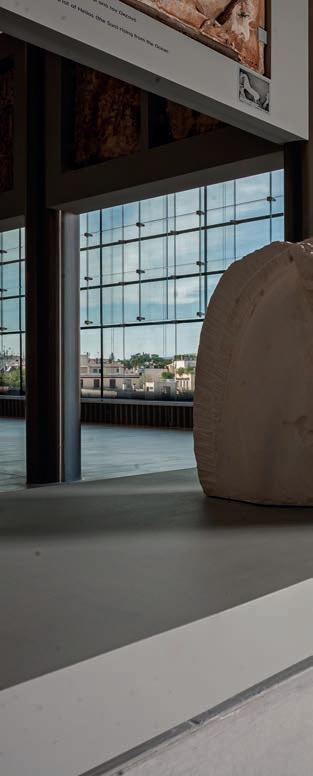
ct: The Parthenon is the perfect endpoint of architectural evolution and refinement that combines the styles of both orders, the Doric and the Ionic. In that regard, it is utterly unique.
Even more extraordinary is that
it was built by public decree, and the citizens controlled all the subsequent works and expenses. Records of this still exist. The sculptural decoration, traditional in the pediments and on the metopes, is revolutionary in the Ionic frieze, representing the Panathenaic Procession, wherein gods and people from all social classes participate together. The temple not only honors the goddess Athena but holds up a mirror to the inhabitants of the democratic city-state; this was the genius of Pheidias, fostered by the patronage of Pericles.
pc: They are unique in two main ways: just like in Renaissance Florence, mid-5th century demo cratic Athens could boast a unique concatenation or confluence of artistic talents – aesthetic, mathematical, constructional, theoretical – all of which was poured into the making of the Parthenon. Second, the Parthenon as a temple was unique in the ancient Greek world in several ways: the sheer quantity and finesse of its sculptural ornamentation – especially the 160-meter Ionic frieze in a basically Doric temple; all the architectural refinements that, for example, make
subtly curved lines look straight; and, the fact, often overlooked that the temple had no dedicated altar. More important, politico-religiously, than the Parthenon was the next-door Erechtheion, the temple of the city patron goddess Athena Polias, which did have a dedicated altar, which the Parthenon had to share! The original was democratic because it was conceived, voted for, executed, and managed in entirely ancient democratic ways.
Today, only 50 percent of the original Parthenon sculptures survive. Of those, half are on display in the British Museum in London. Why should they be returned to Greece?
IMAGINE HAVING BITS OF THE MONA LISA SCATTERED BETWEEN MUSEUMS IN FRANCE, ITALY, SPAIN, DENMARK, AND ENGLAND. THAT WOULD BE ABSURD! THE PARTHENON IS A WHOLE... paul cartledge© GIANNIS GIANNELOS
One of the surviving horses heads from the chariot of Selene, goddess of the moon, descending through the bottom of the east pediment. The Parthenon Gallery, on the third floor of the Acropolis Museum, is in direct alignment with the Parthenon atop the Sacred Rock.
ct: They are all surviving parts of a giant puzzle that can never be pieced together again, but every exist ing part helps to reduce the lost ones and, as far as possible, complete the picture and restore its beauty – some thing that plaster casts could never do! For obvious reasons, the surviving sculptures cannot be reunited with the actual Parthenon building, which is one of the arguments for the refusal by the British Museum to return them. Still, at least they will be displayed in the sublime Parthenon Gallery on top of the Acropolis Museum, in direct visual contact with the monument atop the Sacred Rock, their natural environment.
For people living in the vicinity of the Acropolis Museum today, these
spectacular sculptures can be seen 24 hours a day, seven days a week! A majestic view, especially at night.
pc: Of course, they should be returned to Greece. Imagine having bits of the Mona Lisa scattered between museums in France, Italy, Spain, Denmark, and England. That would be absurd! The Parthenon is a whole – of course, an incomplete and seriously damaged one, but still whole enough for all the extant parts to be reunified where they belong, in Athens, and in a dedicated museum, the Acropolis Museum, not in the appalling surroundings of Room 18 (the Duveen Gallery) at the British Museum. A keyword is “Acropolis.”
The Parthenon was and is of the Acropolis, as well as [being] on it.
At the turn of the 19th century, when Lord Elgin arrived in Athens, the Acropolis was the site of a military garrison. Is there any truth to the claims that he “saved” the priceless marbles from the lime kilns of the occupying Ottoman Turks?
pc: None whatsoever. The Turks were not bent on turning the temple or its decorative sculptures into lime. Besides, why did so much of the monument survive despite nearly 400 years of Ottoman rule? Elgin’s mis sion was not to “save” the Marbles but to grab them – for himself. We know from contemporary sources that the local inhabitants of Athens at the time were distraught by their removal.

One of the British Museum’s arguments against the return of the sculptures is that Elgin acquired permission from the Ottoman authorities of the time – a firman (Sultan’s decree) –to remove them. What evidence is there that he acted illegally?

pc: Firstly, there is no evidence of a firman emanating from the Sultan – only an Italian translation of a summary of a particular type of firman granted by the Ottoman equivalent of the Foreign Secretary.
That did not grant Elgin permission to do what he did. It merely allowed him and his men a free pass onto the Acropolis, a military garrison at the time, to copy some of the sculptures and architectural elements and remove some of the fragments lying around on the ground. To achieve that, his associate, the Reverend Philip Hunt, had to bribe several key officials.
ct: Turkish researchers Zeynep Aygen and Orhan Sakin, in a lecture at the Acropolis Museum in February 2019, described not finding any trace
of the permission documents in the Ottoman archives. This is extraordi nary when you consider that remov ing each fragment from the Acropolis would have required four copies of the firman. In theory, there should be a vast collection of documents in the archives, but it has yet to be found. Furthermore, why was the summary of the so-called firman Elgin pre sented to the British Parliamentary Committee in 1816 written in Italian and not in French, the language of international diplomacy of the time?
Statuary from the Parthenon's east pediment, on display in the Duveen Gallery at the British Museum. The UK Parliament purchased the sculptures "for the British nation" in 1816, but the move drew widespread condemnation, most notably from Lord Byron, who died in the Greek Revolution in 1824.
What next for the campaign for their return?
ct: We must keep the issue in the spotlight and apply continuous pressure upon public opinion by every means at our disposal. The var ious national committees must con tinue to host lectures, give interviews, write articles, present exhibitions, and so on, and we must assure the Greek authorities of our unending support until all the surviving parts of the sculptures are reunited in Athens. That is our goal.
pc: In terms of keeping the campaign in the public sphere, plans are quietly afoot to organize an “International Parthenon Day” next year, where every national committee can host a lecture or an open event to raise further awareness of the issue. Watch this space!
Successive opinion polls have shown that an overwhelming majority of Britons would like to see the sculptures returned to Greece. What can UK voters do to put pressure on their government?

pc: We urge them to continue doing what they are doing and to demonstrate, by their votes, how out of step our politicians and the trustees of the British Museum have become. What’s new in former colonial-im perial countries like Britain, France, and Belgium is the recognition of the sins of our forebears in stealing the cultural property of others. To that end, the British Museum is finally beginning to realize that it needs to keep in step with the times and be a “post-colonial” institution.
In recent years, Western museums have been returning priceless Benin Bronzes, looted by British forces in 1897, to Nigeria. Will the precedent for the return of objects taken during colonial rule gather momentum?
pc: I don’t believe that the theft of the Benin Bronzes is directly com parable to the robbery by Elgin of the Parthenon sculptures, but the Benin repatriation campaign’s success has indirectly helped ours. Elgin did not send in troops to attack the Ottoman state. On the contrary, at the begin ning of the 19th century, Britain and the Ottoman empire were on friendly terms – largely thanks to having a mutual enemy in Napoleon’s France – and Elgin was our Ambassador to the Sublime Porte of Constantinople (Istanbul). Nevertheless, Elgin’s attitude to Greece and Greek things was classically colonialist-imperialist and directly comparable to what happened in Benin in 1897.
ct: Western museums becoming aware of past wrongs during colonial rule are certainly helping our case, and growing public awareness and pressure is essential. One day, the British Museum must recognize this and change its mind.
How helpful are Westernconceptualized “encyclopedic museums” like the British Museum, the Louvre in Paris, and the Metropolitan Museum of Art in New York? Are they still relevant?
pc: This was a cunning ploy de vised jointly by James Cuno (Director of the Art Institute of Chicago, 20042011) and Neil MacGregor (Director of the British Museum, 2002-2015) when under pressure to return the Parthenon sculptures around the time of the opening of the new Acropolis Museum in Athens in 2009. The socalled “argument” that you can better appreciate the sculptures in the British Museum than in Athens was always totally useless and irrelevant.
ct: You do not need the Par thenon sculptures to prove you are a universal museum. There are other ways to do so, for example, by ac cepting the proposition of the Greek government for rotating exhibitions
of artifacts that have never previously left Greece. Where can the Parthe non sculptures better be appreciated than in their place of birth, under the Attic sky?
If the Parthenon sculptures were returned to Athens, would it open the floodgates for other similar repatriations? On what basis would any foreign artifacts remain in Western museums?
ct: No “floodgates” would open. The case of the Parthenon sculptures is unique. Besides, every request for the return of a specific object from a museum collection must be thoroughly examined by a commission of international experts. Such commissions are establishing good working practices and laying the groundwork for open dialogue between museums and institutions. A recent example is the Royal Mu seum for Central Africa in Belgium, working in close collaboration with representatives from the Democratic Republic of Congo, a former Bel gian colony, to return looted items.
Regarding the Parthenon sculptures, the return of the “Fagan fragment” earlier this year from the Antonino Salinas Archaeological Museum in Palermo, Sicily, was a significant step forward in the campaign. The piece, depicting the right foot of Artemis from Block IV of the east frieze, was returned, following negotiations between the Greek Ministry of Culture and the Regional Government of Sicily, in exchange for a loan of two artifacts from the Acropolis Museum. This demonstrated a willingness on both sides to find an agreement, although it’s important to stress that the return of a fragment (“Figure 28” from the north frieze) from a collec tion at the University of Heidelberg in 2006 set things in motion. This was the first repatriation of a fragment from a museum outside of Greece.
The Oxford-based Institute of Digital Archaeology (IDA) recently unveiled a robotically carved marble copy of the Parthenon sculpture of a horse’s head at the Freud Museum in London. Would visitors to the British Museum be content to see replicas?
ct: As a former museum curator, I take issue with the idea of life-size copies or replicas taking the place of original artifacts. No curator will accept such a deal, and certainly not in the case of the Parthenon sculptures. Ultimately, they are fakes. As accurate as they may be, they lack authenticity and soul. You can undoubtedly use replicas for specific things – educational purposes, for example – but visitors will not show up to admire copies; they will feel deceived. I'm sure that members of the other national committees will disagree with me but having a robot-carved copy of an artifact is not different, in this sense, from any other kind of replica. It’s not an individual creative act by a human being; it’s machine-made. What IDA did is undoubtedly a significant step forward in the evolution of copies, and it may open the door to other possibilities of re search, but they can never replace the
originals. I think it would be better to explore using Augmented Reality or Virtual Reality technologies (or a symbiosis of both) – that way, visitors to the British Museum could wear headsets and see digital copies on dis play and the originals can be returned to Athens.
pc: Yes, I totally agree. However brilliantly accurate any such copies are, they are aesthetically, culturally and historically dead.
The work of IDA really started as a noble project to recreate the Palmyra Arch in Syria (3rd century AD), destroyed by Islamic State in 2015. Thanks to photographs and detailed architectural survey reports, we knew the exact dimensions of the monumental arch before it was damaged, so the building of a replica was really to prove a political point, namely that ISIS cannot completely obliterate Western culture. The cam paign for the return of the Parthenon sculptures is very different – a nearly 200-year-old campaign that began almost immediately after the birth of the Greek state in 1832. I think it’s important that we distance ourselves from the work of IDA. In his 1935 essay, “The Work of Art in the Age of Mechanical Reproduction,” art histo rian Walter Benjamin decried the loss of artistic authenticity; the existence of a mechanical copy diminishes the aesthetic value of the original work of art. Of course, new technology has fantastic uses, but not when it cuts across or even stops artistic creativity by individual human beings.
Will a deal be struck in the not-too-distant future?
ct: That’s a difficult question. On the one hand, I'd say the current political and economic climate in the UK makes it difficult to see any light at the end of the tunnel. The British Museum keeps hinting at a “deal,” but nothing concrete has been laid on the table. More details may emerge in the spring. One thing is sure: nothing's
IF YOU ESTABLISH CLOSE WORKING PARTNERSHIPS WITH OTHER MUSEUMS – IN THIS CASE, THE ACROPOLIS MUSEUM – YOU OPEN UP THE POSSIBILITY OF EXCHANGING OBJECTS ON LONG -TERM LOANS. christiane tytgat
possible without changing the British Museum Act of 1963.
While I disagree with one day re placing the current display in the Du veen Gallery with replicas, we should be pushing for the Greek proposal of sending rotating exhibitions for that space. Every museum curator is un der pressure to present new things to the public and, with ever-diminish ing funds, it’s becoming impossible for museums to buy new items for their collections. If you establish close working partnerships with other museums – in this case, the Acrop olis Museum – you open up the possibility of exchanging objects on long-term loans for temporary exhi bitions. That, for me, is the solution. Send the Parthenon sculptures back to Athens and get a revolving door of other Greek antiquities to exhibit to the public. Besides, you don’t need the Parthenon sculptures to serve as “ambassadors” or “flagship” artifacts
of ancient Greek culture in the Brit ish Museum. The Western sculpture galleries are already well stocked with other extraordinary objects.
pc: I entirely agree. Any so-called “deal” that is meaningful – i.e., that results in the actual reunification of the sculptures in Athens – will have to be made at the highest political level, that is to say by Acts of the UK Parliament. But the idea that any British government will put the issue of the sculptures that high in their legislative program any time soon is sheer fantasy. As you know, entry to public museums in the UK is free, which is, of course, a good thing, but that makes it very difficult for trust ees to raise much-needed funds for regular upkeep and new exhibitions.
That said, the current chair of the British Museum, George Osborne, who served as the UK Chancellor of the Exchequer from 2010 to 2016, is talking about a complete re-hang/
reorganization of the Hellenic galleries at the British Museum, including the Duveen Gallery. This may entail more information in the display – i.e., putting the pieces in the correct order, as they are displayed in the Acropolis Museum, and offering more explana tion about the gaps in the collection. This, of course, isn’t a solution to our problem, but it shows movement on the ground at the British Museum.
Another point is that George Osborne is very close to Lord Vaizey, chair of the newly launched Parthenon Project, which seeks to permanently relocate the sculptures to Athens. It will be interesting to see how that plays out. We in the nation al committees want to emphasize the positives. We’ve said that returning the sculptures to Athens could open new horizons for the British Museum regarding temporary loans and unique exhibits from Greece, which would be fantastic!•
The International Association for the Reunification of the Parthenon Sculptures, including the British Committee, has worked tirelessly in support of the Greek authorities, applying pressure on the UK Parliament and the trustees of the British Museum.


Today, thanks to archaeological finds and ancient texts, we can trace the ancient philosophers’ favorite haunts in and around the Athenian Agora.
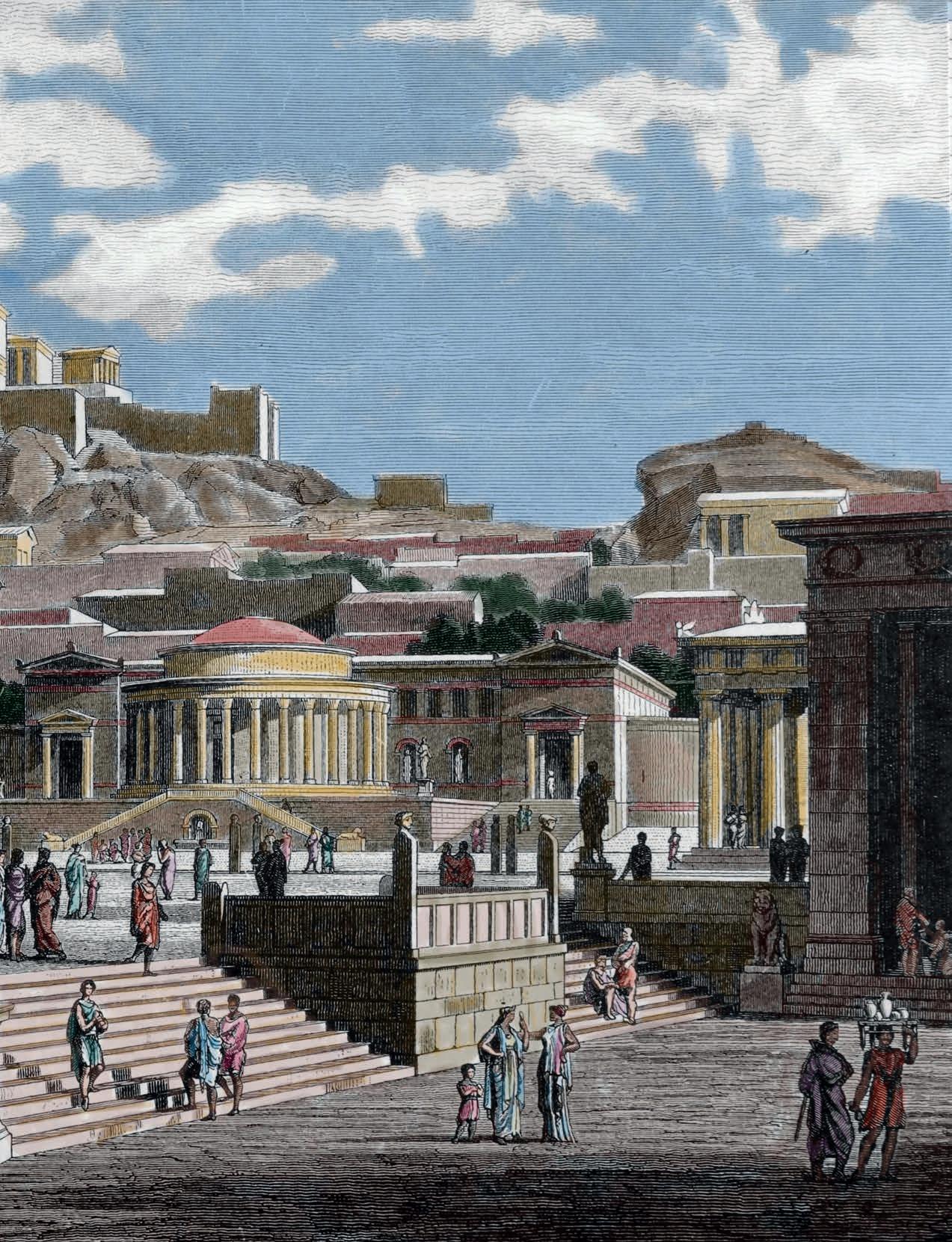
Ancient Greece is remembered for its extraordinary literature, art and architecture, but its greatest achievement was philosophy –intellectual thought, learning and discussion. The Greek world was a land of philosophers in the 6th, 5th, and 4th centuries BC, where great thinkers emerged and flourished even in its remotest corners; from Pythagoras and Epicurus of Samos and Heraclitus of Ephesus (western Asia Minor) to Thales of Miletus, Democritus of Abdera in Thrace, Aristotle of Stageira in Chalkidiki, Empedocles of Akragas in Sicily (Magna Graecia), and, of course, Anaxagoras, Socrates and Plato of Athens. The philosophers were teachers, examiners of the physical and metaphysical world, and often travelers. Ultimately, it was to Athens, a renowned philosophical center, that they were drawn, thanks mainly to the towering figures of Socrates, Plato, and Aristotle, who attracted followers, established schools and left eternal legacies.
Previous spread: The view toward the Acropolis and Areopagus hills from the bustling Agora; engraving by J. Buhlmann, 1881. Above: The Athenian Agora in the 2nd century AD; site plan by J. Travlos, ASCSA, 1955.

Can we now trace the footsteps of Greek philosophers across the age-old landscape of central Athens? Where exactly were the philosophical schools and daily haunts of these early “influ encers”? The evidence for the philoso phers’ movements and favorite hangouts in Athens comes to us through a combination of historical sources and archaeological evidence. The actual lo cations of Plato’s Academy and Aristo tle’s Lyceum are today archaeological sites or parks, while Socrates’ “school” operated beneath shade trees, out in the ancient city streets, or within public buildings and private houses.
Although Socrates himself never wrote anything, his students Plato, Xenophon, and Aeschines of Sphet tus (an Athenian deme) documented his teachings through their firsthand
Iknowledge of him. With ever more specific and probing questions, he ex amined contrasting concepts such as godly/ungodly; beautiful/ugly; just/ unjust; prudence/madness; and courage/cowardice. What, he asked, is a state, a government, or a statesman? Socrates, believing that knowledge of these subjects “made one a gentle man,” strove to cultivate the minds of Athens’ aristocratic youths. In the end, however, having angered their politically sensitive elders, he was tried and convicted of trumped-up crimes, imprisoned near the central marketplace, and forced to drink poisonous hemlock. Today, we can visit specific spots frequented by Socrates and other famous philosophers, not only in the Athenian Agora but elsewhere in the ancient city, where words, objects, and a healthy imagination allow us to re visit and envision delightful conversa tions and a now long-regretted death.

In the heart of ancient Athens lay its central square and marketplace, the Agora, which almost every adult who inhabited the city, not to mention its leading citizens, likely visited at one time or another. Since 1931, the Agora has been the subject of archaeological excavations and remarkable discoveries
by the American School of Classical Studies, with numerous buildings men tioned in historical texts being brought to light. To better understand the Athe nian Agora, the ancient Greek language itself is revealing. The verb “agorazo” meant “to frequent the agora” and “to buy” things, while “agorevo” described the action of speaking in the Assembly, as well as the speech acts of harangu ing, saying, and proclaiming. Indeed, the main activities in the Agora were talking, meeting one’s friends and as sociates, and catching up on the latest news buzzing around the city. As a place of gathering, it also became a cen tral spot for merchants, moneylenders, vendors, street performers, and govern mental officials, including lawmakers, judges, and citizen-participants in the daily operations of the Athenian de mocracy and judicial system.
As archaeologist Mabel Lang re lates in her now-classic 1978 Agora handbook, Socrates was a frequent vis itor and familiar sight in Athens’ cen tral square and surrounding neighbor hoods. There, he strolled along the bus tling lanes, attended court proceedings and Council meetings when required, or, encountering a devoted follower or another target ripe for questioning, ducked into a convenient portico to repose in the shade and converse.
Socrates was the son of a stoneworker/ sculptor, in whose profession he was also trained. As an older man, his physi cal appearance caused him to be viewed as almost a comical or Dionysiac character – comparable to a pot-bellied sa tyr or even the great silenus Marsyas – thanks to his bulging eyes, wide outturned nostrils and thick lips. His disre gard for material comforts and regular bathing, as well as his unkempt clothes and perpetually bare feet, made him a subject of both ridicule and respect. Among Socrates’ young aristo cratic followers, however, not every one agreed with his ascetic lifestyle and his refusal to accept money for services provided. Isocrates, for exam ple, adhering more to the ways of his other mentors, who were sophists and rhetoricians, went on to become a hired speechwriter and frequented the city law courts in search of clients.
Asceticism was later famously em braced by Diogenes of Sinope, one of 4th century BC Athens’ most colorful philosophical characters. As Socrates had, he resisted convention and chal lenged society’s values. In fact, by to day's standards, we might categorize him as a homeless person, as he lived in an enormous, discarded storage jar (pithos) somewhere in the Athe nian Agora and took great pleasure in shocking people with his perverse displays of behavior. He described himself, reports the Roman biogra pher Diogenes Laertius (3rd c. AD), as “a Socrates gone mad.” The same source recounts how he also baited the city’s more conventional, mainstream philosophers. Once intruding at the Academy – when “Plato had defined Man as an animal, biped and feath erless, and was applauded – Diogenes plucked a chicken and brought it into the lecture-room with the words ‘Here is Plato’s man.’”

IN THE AGORA, SOCRATES NOTES, THE ATHENIAN YOUTH CAN SOMETIMES BUY THE WRITINGS OF ANAXAGORAS “FOR A DRACHMA IN THE ORCHESTRA,” ...WHERE SINGING, DANCING AND PLAYS WERE PERFORMED.Socrates’ Address, at his trial for impiety and corruption of the Athenian youth, 399 BC; painting by Louis Joseph Lebrun, 1867.
Although preeminent among ancient Greece’s “word-merchants,” Socrates (ca. 470-399 BC) was neither the first nor the only great thinker to haunt the Agora and its environs. Among the numerous Pre-Socratic philosophers (e.g., Thales, Heraclitus, Empedocles), few may have ever stepped foot in Attica. Anaxagoras of Clazomenae (Asia Minor), however, came to Athens sometime around 456 BC, while Pythagoras of Samos likely stopped in Piraeus and Athens en route to Croton in Magna Graecia. Like many of his contemporaries, Anaxagoras was concerned with the nature of existence, the mind, and the cosmos. Among his insightful theories, he correctly explained eclipses and claimed the sun was a mass of red-hot metal, the moon was earthy, and the stars were fiery stones. Anaxagoras became well known in Athens, familiar to Sophocles, Euripides, Aeschylus, and Aristophanes. He was also a close friend of Pericles. In the Agora, Socrates noted, the youth of Athens could at times buy the writings of Anaxagoras “for a drachma in the orchestra,” a central area where
singing, dancing and plays were performed. In Plato's “Phaedo,” Socrates recalls: “One day I heard a man reading from a book…by Anaxagoras.”
The sight of philosophers hanging about in the city center became even more commonplace during the 5th century BC when a stream of traveling teachers began arriving in the intellectual and democratic artistic incubator that was Periclean Athens. Protagoras of Thrace led this influx of professional educators, known as “sophists,” which included Prodicus, Gorgias, Hippias, and Thrasymachus. Although some were acquaintances and teachers of Socrates, he condemned their practice of accepting payment for sharing knowledge. He also focused his inquiries on aspects of morality, rather than on more traditional questions of natural science. The Athenian public attending comedies in the Theater of Dionysus or other such venues would also have been familiar with Socrates, as Aristophanes often poked outrageous fun at him and the sophists (making no distinction between the two) in various plays, including “The Clouds.”


On the Agora’s western side stood a row of buildings which, along with the meeting place of the people’s Assembly (Ekklesia) on the nearby Pnyx Hill, was the seat of Athens’ democratic government. Everyone was expected to participate, and Socrates’ experience illustrates how seasoned statesmen regularly worked shoulder to shoulder with ordinary citizens unfamiliar with the mechanics of politics. In Plato's “Gorgias,” Socrates admits: “… Last year, when I was elected a member of the Council [of 500] and, as my tribe held the Presidency, I had to put a question to the vote, I got laughed at for not understanding the procedure.” As a senator, Socrates would have sat in the Bouleuterion; when his tribe served as executive council members (prytaneis), he would have resided and eaten state-sponsored meals in the neighboring Tholos building.
The Painted Stoa Later, Diogenes’ philosophy of Cyni cism was taken up by Zeno of Kition (Cyprus), who based himself after 301 BC in the Painted Stoa (Stoa Poikile) on the north side of the Athenian Agora. Zeno’s distinct philosophical approach gained its name – Stoicism – thanks to his followers, the Zenonians, who came to be called “Stoics” due to their ubiquitous presence at the Painted Stoa.
A contemporary of Zeno was Epi curus from Samos, a controversial fig ure whose philosophy would be both embraced and despised, until finally being eclipsed by Stoicism and con demned by Christianity in the Roman era. Arriving in Athens in about 306 BC, Epicurus was influenced by Soc rates’ hedonistic student Aristippus.
Left: Site of the Bouleuterion, western Athenian Agora. Right: The Philosopher’s Garden at Athens, Iconographic Encyclopaedia of Science, Literature and Art, 1851.
He established his own school, The Garden, on property located some where between the Academy and the Painted Stoa.
Also in the northern area of the Ago ra was the Royal Stoa (Stoa Basileios), where the King Archon held office. This chief Athenian magistrate presided over the city’s religious affairs and homicide trials. It was here that Socrates met the Athenian divinator Euthyphron, as Pla to relates, on a morning when they were both waiting for the start of preliminary hearings in their respective trials for im piety and murder. Euthyphron was there to prosecute his own father for causing the death of a worker. They may have sat on the stoa’s colonnaded porch or in its flanking wings, where the Athenian constitution was displayed on inscribed
AS A SENATOR, SOCRATES WOULD HAVE SAT IN THE BOULEUTERION; WHEN HIS TRIBE SERVED AS EXECUTIVE COUNCIL MEMBERS, HE WOULD HAVE EATEN STATESPONSORED MEALS IN THE NEIGHBORING THOLOS
marble steles, or perhaps in the shade of a nearby tree, and discussed the nature of justice and piety. Through Plato, we learn a little about Socrates’ habits and background. Euthyphron says, “What strange thing has happened, Socrates, that you have left your accustomed haunts in the Lyceum and are now at the portico where the King Archon sits?” Later, the sculptor-turned-philosopher refers to the mythical Daedalus as “my ancestor” and lightly suggests he may be “a more clever artist than Daedalus; he made only his own works move, whereas I give motion to the works of others as well as to my own.”
Another favorite among Socrates’ hangouts was the Stoa of Zeus Eleutherios, a large portico just south of the Royal
Stoa, where he walked and talked or simply sat. Aeschines (in Miltiades) reports seeing Socrates sitting there once with the playwright Euripides – both apparently trying to avoid the boisterous, noisy crowds attending the Greater Panathenaia procession. Two pseudo-Platonic dialogues, the Eryx ias and Theages, also reveal this stoa as a calm oasis within the Agora. When Demodocus approaches Socrates re questing a private conversation, he asks “Do you mind if we step aside here from the street into the stoa of Zeus Eleu therios?” Furthermore, Socrates him self recounts: “Happening one day to see [Ischomachos] in the stoa of Zeus Eleutherios apparently at leisure, I ap proached, and sitting down at his side, said: ‘Why sitting still? Generally, when I see you in the marketplace, you are either busy or at least not wholly idle.’”
Socrates enjoyed the outdoors. He was “ever in the open,” Xenophon says. “Early in the morning, he went to the public promenades and training grounds; in the forenoon, he was seen in the market; and the rest of the day he passed just where most people were to be met….” In particular, he was “ac customed to speaking…at the bank ers’ tables” in the Agora, where the moneychangers and lenders operated. These may have been temporary ta bles, set up when necessary and where appropriate, similar to those used to day by vendors in Greece’s popular “laiki” street markets. Socrates was also known to make regular sacrific es at public altars, erected in the Ag ora, the Academy’s sacred grove, and elsewhere.

Being concerned more with human issues, Socrates conversed with Athe nians from all walks of life, from humble craftsmen and merchants to affluent symposium-goers. Painters, sculptors, and armorers were all his subjects or in terlocutors, while a particularly devoted follower was a leatherworker named Simon, who made saddles, reins, and san dals. The shop and courtyard of “Simon the Shoemaker,” where Socrates and his underage disciples probably sat, has been unearthed just outside the southwestern boundary of the Agora. Eyelets, hobnails, and a black-glazed cup base inscribed with “Simonos” reveal the in dustry practiced there. Simon apparent ly took copious notes during Socrates’ visits, as Diogenes Laertius mentions a book he wrote containing thirteen works known as the “cobbler’s dialogues.”
The area southwest of the Ago ra was packed with private dwellings, workshops, the law courts (Heliaia), and the state prison. It may have been in this neighborhood that Socrates and his friends attended the drinking party of Agathon described in Plato’s Symposium. We don’t know precisely where Agathon’s home was, but typical hous es fitting the dialogue’s narrative de tails have been found there. Running through the area is the Street of the Marble Workers, which appears in a humor ous story about Socrates told by Plutarch (1st/2nd c. AD). One day, while passing through this district in a group, Socrates had a premonition and abruptly changed course, leaving some of his companions to carry on down the narrow street of the “statue-carvers.” Soon “they were met by a drove of swine, covered with mud and so numerous that they pressed against one another. As there was no where to step aside, the swine ran into them, knocked them down, and be fouled the rest.” Socrates continued un scathed, but his friends returned home covered in filth, and afterward always recalled their mentor’s inner “feelings” with laughter.
The many gymnasia (training centers) and palaestrae (wrestling schools) of Athens were a particular magnet for Socrates and other philosophers, as they were often filled with young men seeking exercise, sport, and education. They were usually in outlying areas with springs and enough space to accommodate a running track. Socrates mentions stopping at one such place while walking from the Academy to the Lyceum along the northern road just outside the city wall. As he passed a small gateway leading to the fountain of Panops (All-Seeing Hermes), he was hailed by a group of youths standing in front of a walled palaestra, who in vited him inside for discussion. Today, this once-pastoral spot may lie in the vicinity of Stadiou Street, between the Panepistimiou metro station and the Greek Parliament.
The three major gymnasia of 6th-4th century BC Athens were the Academy, the Lyceum, and the Kynosarges, locat ed north, east, and southeast of the an cient city. The Academy, named for the local hero Hekademos, had long been a sacred area, dry and treeless until the statesman Cimon irrigated it from the nearby Kephissos and Eridanos rivers.
By Socrates’ time, it was already con sidered the most beautiful district out side walled Athens. Its cool, shady olive grove, dedicated to Athena, would have been an attractive place for philosophers

ARISTOTLE RETURNED TO ATHENS, TAKING OVER A LYCEUM BUILDING FOR HIS “PERIPATETIC” SCHOOL – SO NAMED FOR THE SITE’S COVERED WALKWAYS (“PERIPATOI”), OR FOR HIS HABIT OF WALKING WHILE SPEAKING WITH STUDENTS.
and their students, who could reach this parkland after walking about 8 stadia (1.5 km) from the Dipylon Gate in the Kerameikos quarter. Plato, from an af fluent family in the area, established his school in ca. 387 BC at his own home, west of the Hippios Kolonos hill. The school’s “campus” was further developed in the following centuries with addition al buildings. Today, a grassy park covers the Academy, where archaeologists have revealed a large late Hellenistic-early Roman gymnasium.
Also pastoral and well-watered was the Lyceum district, east of present-day
Syntagma Square. Bounded on the north by Lycabettus Hill and the Eri danos River (beneath Vas. Sofias Ave.), and on the south by the Sanctuary of Olympian Zeus and the Ilissos River (beneath Vassileos Constantinou/Ar dittou/Kallirois), it was initially sacred to Apollo Lykeios, a protector of herds and flocks from wolves. The Lyceum’s athletic facilities were already used by sophists (e.g., Protagoras, Prodicus) before Socrates’ time, while Isocrates later taught rhetoric there. In 335 BC, Plato’s student Aristotle returned to Athens, taking over a Lyceum building
for his “Peripatetic” school – so named for the site’s covered walkways (“peripatoi”) or for his habit of walking while speaking with students. Aristotle’s Ly ceum contained a library and sample collections of plants and animals, sig nificantly contributed to by his former pupil-turned-conqueror Alexan der. As a place of education, teaching, and research, it represented the West ern world’s first “university.” Today, visitors to the archaeological site beside the Byzantine Museum can view the foundations of a palaestra, founded 350-300 BC.

One of the lushest, most picturesque districts of Athens frequented by phi losophers was the Ilissos River and its far bank, southeast of the Acropolis. On the near bank, below the Olympieion, were smaller temples, law courts, altars, and shrines; on the far bank stood the temple of Artemis Agrotera (the Hunt ress) and the Kynosarges athletic complex, including a running track and one or more gymnasia. It was here that Antisthenes, Socrates’ student, estab lished his school of Cynicism, a name perhaps derived from the Kynosarges gymnasium itself. Diogenes, Zeno, and Epicurus later may all have re ceived instruction at this place, now obscured beneath the junction of Ar dittou, Kallirrois, and Vouliagmenis avenues.
Socrates once met Phaedrus out side Athens, and together they strolled past the Olympieion. In Plato's ac count, Socrates says: “Let us turn aside here and go along the Ilissos.” They walk barefoot in the stream, eventually crossing to reach a small wooded val ley – where the Panathenaic stadium was later built. They sit beneath a plane tree to talk; Socrates, remarking on the beauty and fragrance of the shady spot, notices a nearby shrine of Pan, Achelous and the nymphs, adorned with figu rines and statues. Nowadays, we can only listen to Socrates and imagine this idyllic setting. He observes: “The spring is very pretty as it flows under the plane tree, and its water very cool, to judge by my foot… Then again…, how lovely and… charming the breez iness…, [and] the shrill summer…cho rus of cicadas. But most delightful…is the grass…on the gentle slope...”
Socrates’ pleasant ramblings came to an end in 399 BC when he was accused of impiety and corrupting the Athenian youth. His trial was likely held in the southwestern Agora area, as we know
“the court…was near the prison.” Both the Heliaia court and the State Prison are visible today. When his followers last visited him in his cell after he had been convicted and sentenced to exe cution by drinking hemlock, his fet ters had just been removed, and his wife Xanthippe sat beside him, “his little son in her arms.” She cried out: “Oh Socrates, this is the last time now that your friends will speak to you or you to them.” He replied: “‘I…pray to the gods that my departure hence be a fortunate one….’ With these words, he raised the cup to his lips and very cheerfully and quietly drained it.”•

SOCRATES, REMARKING ON THE BEAUTY AND FRAGRANCE OF THE SHADY SPOT, NOTICES A NEARBY SHRINE OF PAN, ACHELOUS AND THE NYMPHS, ADORNED WITH FIGURINES AND STATUES.
Above: Raphael’s “The School of Athens” (1509-1511); philosophers depicted include Plato, Aristotle (center); Socrates (left, in green) with Aeschines; Diogenes (center, reclining); and Pythagoras (lower left, holding a large book).

Left: The "Prison of Socrates," Philopappos Hill; imaginatively named so by an early modern antiquarian, not to be confused with the State Prison in the Athenian Agora.

At CTC Urban Gastronomy, there are intricate dishes, including this cod filet with leek and burnt butter, that are as beautiful as they are delicious.
Right: The groceryeatery Vassilenas in Piraeus, seen in this late 1930s photo, has always been a familyrun enterprise.
After the doldrums of the financial crisis and the pandemic, Athens’ culinary scene is firmly on the rise again. A renowned Greek writer connects the past with the present as he visits five eateries that have their own story to tell.
 CHRISTOS CHOMENIDIS
CHRISTOS CHOMENIDIS



I've always imagined paradise as a great big table strewn with platters, plates, bottles, glasses, baskets of bread and meat piled high on greaseproof paper. There's a crowd gathered around these delights – kith and kin; acquaintances we'll soon come to know better; and passing strangers who stop for a bite and whose faces or mannerisms pique our interest. We tease or bait them and await their response. The music plays on, competing with the small talk and the flirting. Sometimes that great big table is a bed, a wrestling ring, an art studio or a theater, but whatever it is, the party never stops. Here in this real world, however, that's not how it happens. Someday we’ll simply retire to the shade of a tree for an eternal nap, freeing up our seat at the table for the next person.

EVEN AS A TEENAGER, I regarded any date with a girl as involving a meal. The food scene in Athens was much, much different back in the 1980s. It had a few hip restaurants like Iridanos and Papakia in the area known as Hil ton, named after the hotel, and classic dining halls of 50 or more tables, like the Kentrikon on Kolokotroni Street or Ideal on Panepistimiou. The GB Corner, on the ground floor of the Hotel Grande Bretagne, served dishes such as “Athenian” grouper or “Texas” chicken – composer Manos Hadjidakis and poet Nikos Gatsos could be found there most days, having lunch with their students. Five minutes up Lycabettus Hill on foot, Gerofinikas titillated its patrons’ tastebuds with delicacies that included Lobster Thermidor. L’Abreu voir at the end of Xenokratous Street has been preaching the joys of French cuisine since the early 1960s, just like its twin in Kifissia, Blue Pine.
In this thriving scene of family restaurants, waiters would appear from the kitchen carrying massive wooden trays laden with assorted plates of meze and diners would call out “Grab some fried zucchini! A tzatziki! A saganaki!” Every neighborhood had its local “kout ouki,” too, with a sign that said “Wine and Grill” at the entrance, telling you precisely what it was. The koutouki proved, in fact, to be the most adaptable and durable of Athens’ eateries.
***
A tsunami of change has since swept across the restaurant business in the Greek capital. In anticipation of the 2004 Athens Olympics, the turn of
the millennium brought lobster pasta and exotic wines. Every self-respecting restaurant stocked its wine cellar with bottles from Chile, New Zealand or South Africa and placed a cigar humidor in a position of prominence. Greeks were asked to eat (admittedly delicious) ostrich – and more than a few business people invested in ostrich farms. We discovered beer-fed Kobe beef from Japan – at astronomical prices – and you could even try kangaroo ribs if your budget stretched that far.
A couple of years later, it started raining sushi. Every third restaurant seemed to have a counter in the back and a couple of Japanese chefs, dressed like surgeons, rolling up sheets of nori. A dish that was the people’s food back home was cast here as the pinnacle of sophistication. A little later, it was truf fle – grated or shaved over pasta, meat or almost anything else – whose pungent aroma filled the air. The connoisseurs, who were probably right, sneered and favored the temples of “nouvelle cui sine.” You’d order a moussaka and get presented with a small brown ball in the middle of an otherwise empty plate. You’d crack it open, releasing, as though by some miracle, the flavors of minced beef, eggplant and spices.It really was moussaka: moussaka for astronauts. ***
In 2010, the Greek state went bankrupt. Society was thrust into a deep crisis. Gone were the days of maki and sashimi. Gone, too, for most were the tartares. And if you could still afford to pay for them, you were looked upon like a black marketeer. You were better off standing in line at the food truck for a couple of souvlaki with pita and eating them on a park bench.
Now, at the tail end of the pan demic and despite the war in Ukraine, the energy crisis and inflation, Greece is back on the path of recovery (or at least it feels that way). “Dining out” has returned in full glory. New restau rants are popping up every week, and innovative culinary concepts are being put to the test by the public. With
“DINING OUT” HAS RETURNED IN FULL GLORY. NEW RESTAURANTS ARE POPPING UP EVERY WEEK, AND INNOVATIVE CULINARY CONCEPTS ARE BEING PUT TO THE TEST BY THE PUBLIC. WITH SUCH A PLETHORA OF CHOICES, IT’S TOUGH TO FIND YOUR WAY.
such a plethora of choices, it’s tough to find your way and avoid becoming a disappointed diner lamenting the cost of dinner and venting your frustration with scathing reviews on social media. There is, perhaps, one way to prevent getting lost, and that’s by starting with establishments that have long, deep, roots.
The master of all Greek prose writers, Alexandros Papadiamantis, has given us beautiful descriptions of the Athenian food scene at its birth.


The setting is an “edodimopoleion” – a grocery store, basically – in the mid19th century. Rather than taking their purchases to go, male patrons want to enjoy them on the spot, in the company of others. So, instead of wrapping the cheese and cold meats in paper, the proprietor lays them out on a table and fills a small metal jug with wine from a wooden cask. Over time, the grocer installs a stove, buys a pot and com missions his wife or daughter to cook up a dish – perhaps even two – every
day, using their fine olive oil. And with those simple steps, the grocer becomes a taverner. It’s a story so familiar that it’s almost trite. But what is so interesting about it is that at least three restaurants doing brisk business in Athens right now are survivors, or descendants, of the classic grocery store-turned-taverna.
Leloudas is in Votanikos, a district once packed with blue-collar work ers and local toughs, or “manges,” immortalized in such great rebetiko songs as “Votanikos’ Mangas” and “A Mangas in Votanikos.” The residential population has dwindled in recent years, leaving behind manufacturers, warehouses and depots. Leloudas, however, has remained steadfastly put, on a 6,000-square meter plot divided between 26 owners (property ownership in the greater Acropolis area is often as fragmented like this; apart from the Plaka, these districts were once tightly jammed with small structures and alleyways). It has just four tables outside, on the narrow strip
of Salaminas Street, and another dozen or so inside.
Leloudas is a family business. The present owner’s grandfather came to Athens from the island of Kythnos before WWII. He started working wherever he could to earn a day’s wages, either at the local factories or at the grocery and wine store run by his sister and her husband. Eventually, he took over that business. He never had a home of his own, instead spending nearly half a century with his wife and children in the room next to the storeroom with the wine barrels. In 1972, he was succeeded by his son and daughter-in-law, and they, in turn, gave way to their son, who took over management in 2004.
This history is conveyed through a series of photographs on the walls –the oldest depicts the present owner's great-grandfather on a boat in the Aege an sometime in the 19th century – and by the tales the present owner shares with his patrons: “On November 8th, 1990, it was sleeting in Athens. At daybreak, my
father filled one of the big barrels, those holding 850 liters, and by midnight all the wine had been consumed … We demolished the original store in 1995; it was little more than a shack, without a proper restroom even, and built the building you see today … The taverna used to stay open from lunch until late at night. But people started moving out of the neighborhood, and unsavory types started hanging around, snatching our customers’ purses. I had enough and decided to start closing at five in the afternoon.” The menu at Leloudas also remains largely unchanged: meatballs with fried potatoes; lamb in a lemon sauce; fried cod with garlic puree; and fava dip. The dairy products from Kythnos have, however, been removed be cause they weren’t certified. One menu item I’d never tried before is called The Poor Man’s dish: fried potatoes topped with minced meat and grated cheese. For just €15, you can throw your taste buds a party in a location that feels like the set of a neorealist film.
The eatery Oikonomou shares a similar past to Leloudas. In the early 20th century, a man from Trikala traveled to Athens and opened a small diner in the then-poor neighborhood of Petralona, serving meat soup, tripe soup, and vegetable stews. Here, howev er, the similarities end. Over time, this modest taverna became an institution in a neighborhood that boomed rather than declined. It invested in the future in 1951 with the purchase of an Altis refrigerator that still works and even earned the praise of a Financial Times correspondent. In 2000, Kostas Dia mantis purchased the taverna by paying Oikonomou’s son an amount equal to two years’ worth of good earnings. He spent an equal amount renovating it, with loving care, to a high professional level. He expanded the menu, adding Epirot pies, lamb fricassée, pork with leeks and celery, rooster with okra, and other highlights of Greek cuisine.
Today, Oikonomou is a hangout for artists and intellectuals and a magnet

THE MENU AT LELOUDAS ALSO REMAINS LARGELY UNCHANGED: MEATBALLS WITH FRIED POTATOES; LAMB IN A LEMON SAUCE; FRIED COD WITH GARLIC PUREE; AND FAVA DIP.© KATERINA AVGERINOU
for any foreigners yearning to acquaint themselves with the local cuisine. Even the Greek president used to eat here at one time; after all, Petralona is now one of Athens’ most popular alternative areas, with bustling bars and outdoor movie theaters.

Good-natured and smart as a whip, Kostas Diamantis always does the rounds of the tables. He chats with his patrons, forges friendships and gets invited to the theater by the actors. As is true of any good taverner, he is also a barometer of the country’s social and perhaps even political weather. As he tops up wine glasses and serves platters of cheeses on the house – manouri, feta, and kefalograviera – he gets a whiff of every development in the offing.
The eatery Vassilenas is proof that initiative and diligence are hereditary. The present owner’s grandfather, another grocer-vintner, had the brilliant idea back in the 1920s to bring packaged meals to the factory workers of Piraeus; it was Greece's original

take-out service! His food was delicious, and even the bosses loved it, so they started hanging out at his taverna along with the workers.
The second innovation came a few years later: diners would no longer choose what they ate. Instead, in what was known as table d’hôte at the time, Vassilenas himself would determine a succession of dishes, composing a symphony of flavors in 10 to15 parts.
Once WWII ended, and as Pi raeus became a center of international shipping, Vassilenas’ reputation sky rocketed. No one of any prominence could visit Greece without making a stop there, not Winston Churchill, Tyrone Power, or Elia Kazan. The homegrown elite dined here as well. The Nobelist poet George Seferis even mentions Vassilenas in his journal. for his part, Vassilenas (and his son after him) collected the handwritten cards of praise from patrons, the rave newspaper reviews in different languages, and the photos snapped by paparazzi of celebri ties at his establishment. Father and son enjoyed the recognition. Nevertheless, they firmly believed theirs was a “baka lotaverna” (a grocery store-taverna) and that it should remain such, retaining the mark of their provenance in the decor and the food they served.
In 2005, the grandson of the taverna's founder moved Vassilenas from Piraeus to the central Athens district of Ilissia and turned it into a luxury restaurant. Did he divest it of its unique character? If you’re nostalgic, then yes. Little is left from the historic menu save the famed taramasalata. The atmosphere is no longer alive with accordions, guitars and singing; it is professional and sophisticated. But Thanassis Vassilenas, a brilliant man and entrepreneur, stands by his choices. He’ll tell you there was no point in this rapidly changing world risking ending up a guardian of tradition and little else, the owner of a mausoleum to days and people long gone. And if his arguments fail to sway you, his food will: meat dishes and seafood options of
the highest quality, the highly original creation known simply as “Egg,” and a great red mullet savoro, a dish I doubt is served anywhere else in Athens.
Linou Soumpasis kai Sia is the result of the work of Myrsini Linou and Giorgos Soumpasis, who, like Napoleon who boasted that his success was all of his own creation, can claim all the credit for the excellence of this establishment. In late 2021, they leased space in Psyrri, revamped it in a minimalist style (with aluminum playing a key aesthetic role), and launched their restaurant. How can I describe the result? It’s postmodern, in the sense of combining disparate elements. That starts with the sign, Linou Soumpasis kai Sia; how long has it been since we
saw a business named after its owners? There's also the fact that the restaurant acts as a candle shop, too. It all seems a little silly at first – but then the food and wine make their appearance.
The food comes from Lukas Mail er, an inspired chef who, despite being so young, had already made history on the island of Lemnos, that culinary paradise in the northern Aegean, before joining the team in Psyrri. With a bit of cajoling, Soumpasis brought him to Athens, where Linou gave him carte blanche in the kitchen. The result includes a finger-licking half rooster (with visible spurs) slow-cooked in a clay pot. A salad of boiled vegetables is so delicious that it’s like nothing I’ve tasted before. There's tomato juice in a bowl where you can dip your bread,and fragrant organic wines to go with it all, including an enchanting orange Malagousia.
Everything is in play at Linou Soumpasis kai Sia. There’s no fixed menu; the chef improvises with what the market offers that day. There’s no “target audience” either; it’s a social mix-and-match that’s very welcome in an age when people tend to buttress themselves behind labels, to navel-gaze with like-minded spirits and to wage war against “others.”
The only condition to this fete of flavors? Being able to afford the €150 it costs a couple to leave the restaurant feeling hearty, tipsy and happy. “If we lowered the prices,” say the manage ment, “we’d also have to lower the quality.” It’s an honest statement.
CTC Urban Gastronomy confirms my belief that a restaurant’s success should not be judged by its effect on the tastebuds and stomach but on the mind and spirit. A great meal out includes fascinating conversation, fertile arguments, new collaborations and budding romances, where groups of friends suddenly feel compelled to sing, occasionally rousing others to song as well. The food and the drink are there to help this magic happen and, ideally, you’ re so carried away by the company
EVERYTHING IS IN PLAY AT LINOU SOUMPASIS KAI SIA. THERE’S NO FIXED MENU; THE CHEF IMPROVISES WITH WHAT THE MARKET OFFERS THAT DAY. THERE’S NO “TARGET AUDIENCE” EITHER; IT’S A SOCIAL MIXAND-MATCH.
you can’t even remember just what it is you’re eating and drinking even though this is, in fact, the fuel of your bliss.
If it’s in your nature to spend two and a half hours dedicating yourself to flavors and heavenly food aromas, you should book a table at CTC Urban Gastronomy. A table for one would probably be best, as there’s little chance you’ll be interested in anything beyond what’s on your plate and in your glass.
It’s not the Golden Toques or the Michelin star that counts, it’s the chef: Alexandros Tsiotinis. Raised in the Athens suburb of Patissia and initiated to food in Paris, Tsiotinis is an inspired artist. His menu comprises 11 dishes whose exact natures are kept secret from the uninitiated diner, just
like the ending of a film might be, and seven different wines that complement the food to perfection. The vision? To elevate Greek cuisine to the stars, taking it to its apogee. It’s a vision that isn’t betrayed by the execution.


A warning: we're about to reveal some of that menu, which includes a combination of spinach pie and lobster with avocado cream to set the tone, followed by corn chowder, then calamari with a pesto sauce and a hint of garlic, the fresh fish of the day with a soupçon of caviar, and lamb with a simple dressing of olive oil and lemon. The servers explain each dish and the sommelier delivers brief lessons in his craft as he pours.
The most fantastic thing of all may
be the dessert: half a peach perched on icing sugar appears before you, but as you start eating, you discover that the flesh is white chocolate and the pit is its dark counterpart. It’s Disney’s “Fanta sia” in dessert form. Speaking without bias, CTC Urban Gastronomy is at the pinnacle of the culinary Olympus.
Can the aftermath of an excellent meal be like that of a sexual encounter? With food, can there be something like post-coital tristesse, the melancholy that follows an intense orgasm, when “the devil’s laughter is heard,” as Schopen hauer says? I believe so. And there lies the grandest – and quite ridiculous – of human tragedies; we will do anything for a meal, a drink, and a night of love, as though chasing our own tails…•
The fortunes of this downtown district have waxed and waned for decades. Today, it's home to new openings, new people and new energy, making it – yet again – the city's hottest spot.
This neighborhood oasis harbors as much history as Athens' more famous hills, yet it's frequented only by those in the know.



Skip the tourist traps. These 14 eateries in Piraeus are the ideal places to get a taste of real Greek food before heading to the islands.
The German artist Alexander Jaschik has captured the city’s fast-disappearing wrought-iron entranceways with his lens.

Οrder back issues now at: subscription.kathimerini.gr/greece-is



Pay only shipping & handling.



